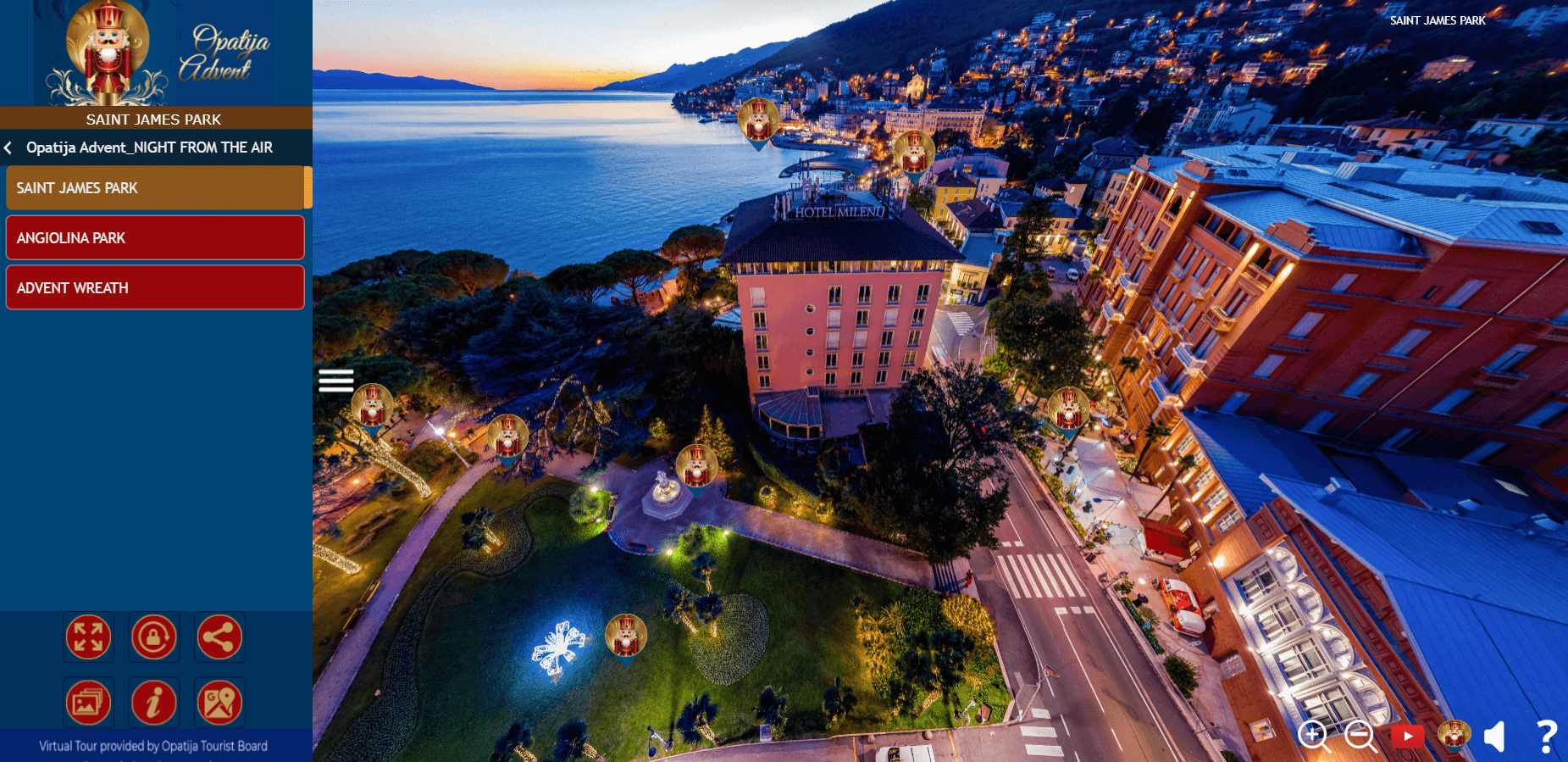Zagreb Advent 2022 Bringing Foreign Visitors to Croatian Capital in Droves
December the 21st, 2022 - Zagreb Advent 2022, the first to be held normally since the pre-pandemic advent of 2019, is drawing foreign visitors from across Europe and indeed from further afield to the Croatian capital this festive season, and the more or less constant fog and rain isn't bothering them.
As Poslovni Dnevnik writes, aside from those of us who make up the capital's local population, Zagreb Advent 2022 is also turning out to be real lure for all sorts of guests from abroad. Although the weather conditions (rain and fog) haven't been exactly favourable for visitors, there's no shortage of tourists here in the city. It is the foreign guests who are driving spending and consumption most of all, because if they weren't there, Zagreb Advent 2022 would already be in the red, at least according to a report from HRT.
The always popular ice skating rink on King Tomislav Square is a little bit different this year than it was back during previous years. Due to the ogoing rain, the number of visitors is - at least for now - significantly less than in the years before the global coronavirus pandemic shook the world.
"So far, the weather has been really awful. The first two weeks we had constant rain and maybe only two dry days. Despite this, there are really a lot of tourists in Zagreb, we can feel that at the Ice Park as well. So, regardless of the weather, the results are relatively alright,'' stated the organiser of the city's "Ice Park" Slavica Olujic Klapcic.
One hundred metres away, on Strossmayer's Square, lies the center of Zagreb Advent 2022's gastronomic offer. Most of the visitors there are foreigners.
"We can say that everything except the weather conditions, which aren't very favourable to us, is actually great. There are people coming, people come even in the rain, especially on weekends," stated restaurateur Ivan Badzek. It also seems that for our guests from abroad - given the fact that they're already here - the rain does not bother them. "This is our first time at Zagreb Advent. It's very beautiful and the food is very good,'' said Evelyne from Austria.
"We tasted some mulled wine and it was excellent. It's really very nice. We also tried some food, but we have more exploring to do,'' said Malou from the Netherlands.
Data from the Croatian National Tourist Board (CNTB/HTZ) shows that in the first two weeks of Zagreb Advent 2022, the number of arrivals is 50 percent higher, and the number of overnight stays is 34 percent higher than last year. To evaluate the touristic effects of Zagreb Advent 2022, HRT also turned to one hotel, located in the very heart of the city, near the popular Funicular.
"This year, the occupancy levels exceeded all our expectations, during the week we've been 80 percent full, and over the weekend we're 100 percent full. Advent greatly affects our occupancy rate," said hotel manager Nikolina Kuhar. In addition to locals, foreign guests mostly come from nearby countries, but also from Western European countries such as Germany and Great Britain, as well as from across the pond in the USA. Hotel capacities here in Zagreb are very well filled until the end of this year, so, unlike many restaurateurs, hotels and hostels have reason to be satisfied.
For more, check out our news section.
Hospitality Establishments Seeking Lower Pula Advent Cottage Rent
December the 14th, 2022 - Catering and hospitality establishments located in this beautiful Istrian city are seeking lower Pula advent cottage rent, as they deem the current price too high and too difficult to imagine making much of a profit from.
As Poslovni Dnevnik writes, the ''tenants'' (if you can call them that) of Pula advent cottages never dreamed that the weather forecast would be so unfavourable for them at this time of year, and the duration of their Pula advent cottage leases, which stretches for just over one month, is very short indeed. Owing to not only the poor weather but ongoing inflation and people's pockets being shallower than ever, it's already showing that their rental payout and their work, especially with such an expensive lease, will not really pay off for them in the end.
Continued weather problems have very significantly reduced the income of catering and hospitality establishment owners who rented expensive Pula advent cottages, which is why they decided to turn to the City of Pula's administration itself and request a reduction in the rental price, according to local portal Glas Istre/The Voice of Istria.
Yesterday, as Glas Istra learned, the catering and hospitality establishments facing these issues with Pula advent cottage rent prepared a joint letter which they claim that they intend to send to the local authorities. Whether the City of Pula will actually see what they're saying, meet them halfway and lower the price of cottage leases that they paid in advance, will only be known later. No matter how valid their reasons, there's no saying that they'll get a positive outcome when they receive a response from the city administration.
To briefly go into how who gets what is decided for the festive period, the Pula advent cottages were awarded to catering and hospitality establishments previously at a public tender, and the most expensive one among them costs a massive one hundred thousand kuna.
Danijel Britvic, one of the tenants who offers homemade local Istrian dishes on the edge of Giardino, has set aside a considerable 75,000 kuna, including VAT, for his Pula advent cottage, which likely isn't making him anywhere near as much of a return as he had expected and hoped.
For more, check out our dedicated news section.
Advent in Zagreb Spreading Further Outside of City Centre in 2022
October the 8th, 2022 - Advent in Zagreb this year is set to be spread out further than the heart of the city, with cottages boasting festive food and drink of all kinds returning to Zrinjevac and King Tomislav Square as has become the norm.
As Poslovni Dnevnik writes, although the City of Zagreb announced the tender for Advent in Zagreb 2022 this summer, it will have to be repeated for certain city locations. The reason for the repetition, according to the city administration, is the non-fulfillment of the conditions that Zagreb does insist on. This year, unlike last year, festive cottages will be returning to Zrinjevac, and Advent in Zagreb in general will be spreading further out to the city's neighbourhoods, according to a report from HRT.
After the City of Zagreb changed the tender conditions for Advent in Zagreb, the interest of restaurant owners and various craft owners seems to be less than expected. Out of 32 locations, 25 were leased through bidding, and now another new round of bidding will follow for the remaining seven.
"The offers that came in for those locations didn't really match. None of them corresponded to the formal conditions of the tender when we talk about occasional sales and catering in the so-called bidding model of auctions,'' explained Tomislav Tomasevic, Mayor of Zagreb. Craft owners are also outraged, as they claim that entry into the Advent in Zagreb tender for this year costs a minimum of 3,000 kuna. Even if that sum is paid, it isn't any sort of guarantee of success. In order to seriously compete, the price goes up to 20,000 kuna, a sum far too much for most craft owners.
"It's a tender in which we didn't have any right of precedence, but it was open to everyone and our colleagues had to offer quite high prices in order to get to their positions for which they've already been recognised for years," said Antun Trojnar, vice president of the Zagreb Chamber of Crafts.
Bidding for the eight locations on the main square under the clock is a real roulette for most artisans. Besides having to spend money on the actual bidding, they also need it for production. When all is said and done, such a move is actually unprofitable for the vast majority. Restaurateurs are also being very careful. A weaker interest may also lie in the fact that this year many facilities will celebrate Advent in Zagreb on their own terraces.
"It's certain that this autumn and winter bring a certain amount of fear for restaurateurs due to the overall economic situation and the energy crisis we're currently in, not to mention the potential lack of manpower," said Ivan Tadic, secretary of the Zagreb Restaurateurs Association. That said, they do welcome the fact that the festive cottages are returning to Zrinjevac and King Tomislav Square, and this, they say, is the direction in which the capital should continue to go.
"When Advent in Zagreb was organised, it accounted for almost one-fifth of the total turnover in the hospitality industry that year," Tadic pointed out.
For the first time this year, Advent in Zagreb is expanding outside of the boundaries of the city centre, but even there, the level of interest is half-hearted. Out of ten different locations, the tender is going to need to be repeated for five of them.
Last year, Advent in Zagreb was held in a different atmosphere which was still dominated by the general fears of the public health situation and lockdowns. Some liked it, some didn't. This year, the city administration has claimed, will certainly be different.
For more, make sure to check out our dedicated travel section.
Waterfalls, Cheese and TV Shows - How Do Foreigners Recognise Croatia?
September the 12th, 2022 - Just what is it that makes Croatia so recognisable to foreign visitors? From Game of Thrones to waterfalls and Christmas events, the list is varied.
As Morski writes, the well known travel blog Travel Drafts Croatia has stated that ''Croatia is a beautiful country in the Western Balkans, which is actually a part of the former Yugoslavia... Although it is a very popular destination among newlyweds, families with children and backpack tourists, this country has recently experienced a small renaissance".
Game of Thrones
One of the most watched series ever to be produced used the Croatian city of Dubrovnik as King's Landing, the fictional capital of the seven kingdoms in the series. Because of this, among other things, word spread about how beautiful this city is. Tourists flock there to see where Cersei had her Walk of Shame, and to tour the sets of the hit series.
The blog then goes on to state that would-be visitord should know that the city is full of tourists during the hot summer months and is much easier to explore during the off-season.
Beautiful waterfalls
Krka National Park is home to the most famous waterfall in all of Croatia, known as Skradinski buk. Plitvice Lakes are also home to numerous beautiful waterfalls. Although they are not so well known individually, this is one of the ten world heritage sites located in Croatia which is under UNESCO protection and one of two natural sites under UNESCO protection.
Red tourism (so-called)
Red tourism is travel to communist, socialist or ex-communist/socialist countries, usually by people originating from non-communist/socialist countries to learn about the heritage of those forms of government. Tours of communist monuments are a great way to learn about what life was like in Yugoslavia. The blog recommends people to start with the Podgaric monument, which is one of the most striking examples of all of this form of ex-Yugoslav public art.
Even traditionally beautiful places like Dubrovnik offer opportunities for people seeking red tourism. Here, you can tour the Red History Museum, which is the first interactive museum in all of the Republic of Croatia dedicated to educating visitors about what life was like during communism.
The World Cup and football
Croatia made it all the way to the finals of the 2018 World Cup. Although they ended up losing to France, they were the pride of Europe and showed the world exactly how outstanding and passionate Croatia is when it comes to the most popular sport in the world. The blog notes that the footballing tradition in Croatia is strong, explaining how the country has actually competed in the World Cup five times as an independent nation. Croatia had its very first performance back in 1998, when it came third! Of course, before that, the Croats competed in the larger Yugoslav team.
Beautiful islands
The Greek islands may be more famous, but the Croatian Adriatic islands are just as (if not more) beautiful. From Pag to Hvar, each one is a small perfect gem located in the middle of the Adriatic Sea. One of the most popular ways to experience the Croatian islands is to go on a sailing adventure and visit the most beautiful islands in the country/ Different islands have different reputations. There are islands known for their nightlife and parties, while others are known as real family-oriented places. Others have a more romantic atmosphere.
There are over one thousand two hundred islands dotted along the Croatian mainland, and almost fifty of them are inhabited. The blog tells its readers to be sure to do their research beforehand and choose the right island (or combination of islands) to suit the type of trip they might want to take.
Ancient Roman ruins
The blog says that if its readers enjoy visiting ancient Roman ruins, then they'll absolutely love visiting Croatia. In Split, you'll very easily find the Diocletian's Palace which is on the UNESCO World Heritage List. Diocletian, one of the most famous Eastern Roman emperors, ruled from the year 284 to the year 305. Back during that time, his palace was built in the very heart of the City of Split (Spalato), which was his main residence. Other important historical landmarks in Split that are part of this UNESCO World Heritage List include churches from the twelfth century and palaces from the fifteenth century.
The cravat
Considered an original Croatian product, it spread throughout Europe during the seventeenth century thanks to Croatian soldiers serving in the Thirty Years' War, where it became a recognisable fashion detail. The French were among the first to adopt it, and it entered their language under the name cravate, and later also in other European languages under similar names. Croatian ties, or cravats, are slightly wider than modern ties and are an extremely popular Croatian souvenir, especially in Zagreb, the country's charming capital.
Croatian honey
The Balkans is a region famous for homemade honey. While all countries in the region produce honey and claim that theirs is the best, you really don't want to miss trying it in Croatia. Or buying it as a souvenir.
Christmas markets
While many people think of Croatia as a summer destination, it is actually a fantastic place to go in the winter too! The Zagreb Christmas Market has been awarded the title of "Best European Christmas Market" for three years in a row. The people of Zagreb really turn their city into a winter wonderland, with an ice rink, amazing lights, traditional food and drink, and festive shows.
While Zagreb gets the most attention, Dubrovnik and Split also have great Christmas markets that are worth seeing, the blog adds.
Pag cheese
This hard cheese with an extremely distinctive and strong taste comes from the island of Pag and is made from sheep's milk. It is considered the most famous specialised cheese in all of Croatia, and can be found in many markets outside the country.
Lavender fields
The blog lets its readers know that the most famous lavender fields are located on the stunning Central Dalmatian island of Hvar. This island has been growing lavender for centuries, and during the months of July and August the fields become beautiful, and the air is permeated with the distinct smell of lavender.
''Croatia is an absolutely amazing country and I strongly encourage you to plan your own Croatian adventure! The top five destinations that you should not miss are Dubrovnik, Split, Plitvice Lakes, Zagreb and the island of Hvar. However, Rijeka is currently famous for its role as the European capital of culture, so you should put it on your itinerary for Croatia,'' Travel Drafts tells its readers.
For more, make sure to check out our dedicated travel section.
Bogojavljenje (Epiphany) - Three Kings Day in Croatia
January 6, 2022 – Thursday 6 January is Bogojavljenje (Epiphany). Three Kings Day in Croatia is a national holiday. It is also a day marked by its own historic and very distinct traditions.
With the fireworks of New Year's Eve almost one week behind us, Christmas already feels like it was quite a while ago. But, with church bells ringing out across the land, Three Kings Day arrives on 6 January to remind us in Croatia that we're not quite finished yet.
Commonly known as Bogojavljenje (Epiphany), Three Kings Day is highly significant in the Catholic calendar. It is also a day of limited but extremely distinct tradition in Croatia. Understanding these traditions requires a comprehension of some Bible scriptures. More so, perhaps, than the traditions of any other feast or celebration days connected to Christmas.
What is Bogojavljenje (Epiphany) - Three Kings Day in Croatia?
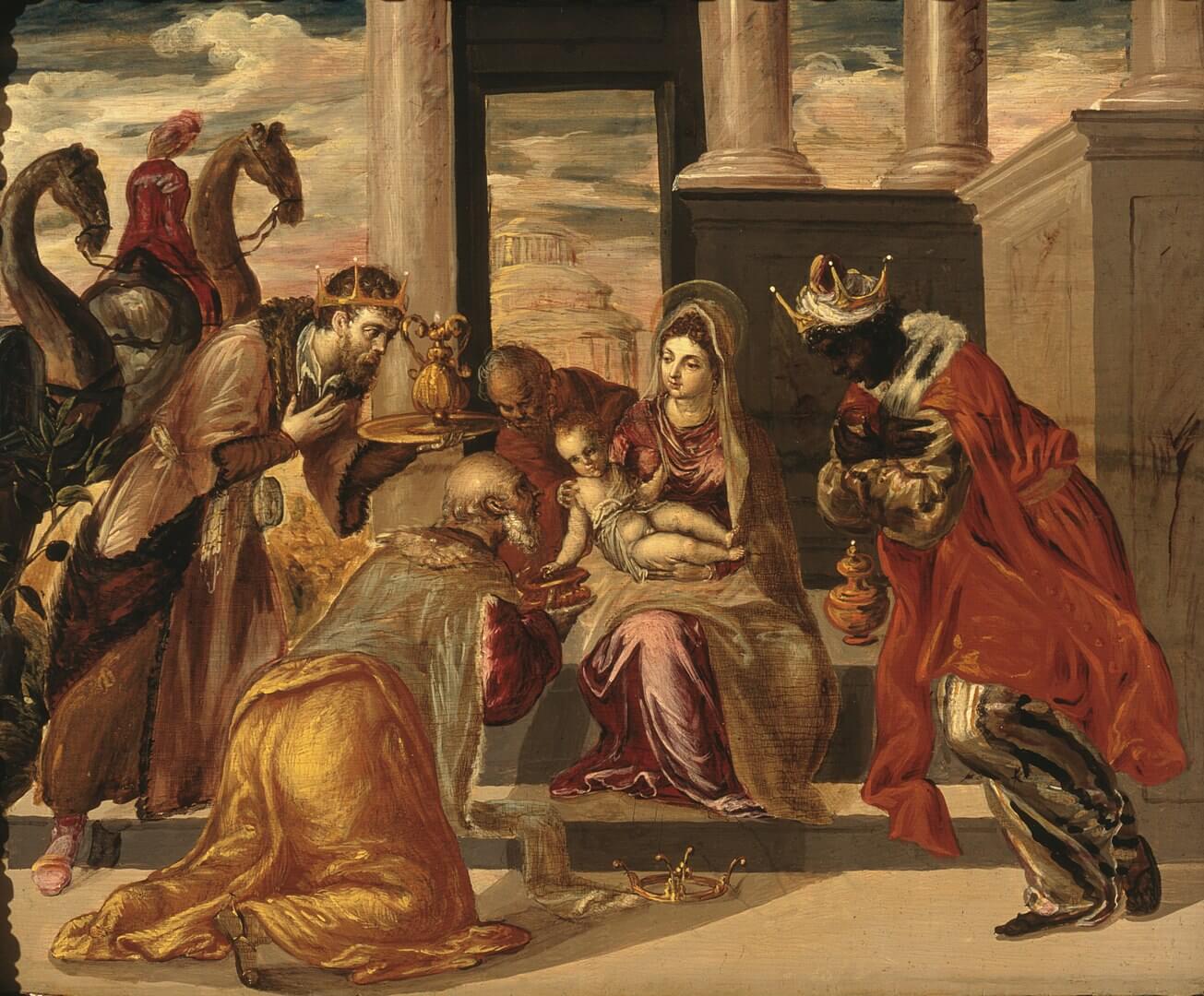 Adoration of the Magi by El Greco
Adoration of the Magi by El Greco
January 6 is celebrated in the Catholic church as both Epiphany and the day of the Three Kings. Epiphany is the revelation of Jesus as the Son of God to those outside Judaism. Three Kings Day is when the three kings – otherwise known as Magi or the three wise men - visit the newly-born Jesus and present gifts to him.
These could look like two different celebrations that just happen on the same day. But, in fact, they are not at all separate. Although, their connection does take some explaining. And the traditions the day creates in Croatia takes even more explaining.
Who are the Three Kings aka the Three Magi?
 The Magi, celebrated on Three Kings Day in Croatia
The Magi, celebrated on Three Kings Day in Croatia
If you've seen a nativity scene or any Christian art related to Christmas, you'll be familiar with the image of the Three Kings. But, actually, they are not in the Bible. What the Bible says is, Magi arrive in Jerusalem at the time of Jesus's birth. They ask the location of the 'king of the Jews' so they can pay tribute. No number is allocated to the Magi.
However, the Bible details that the Magi carry with them three gifts for Jesus – frankincense, gold and myrrh. It is from this number of gifts that the embellished western tradition presumes the number of Magi. In the eastern church, the number of Magi is actually set at 12!
Their number is not the only way their story has been enhanced. Over the years, the Magi have been given very different places of origin. In some of the first embellishments, the kings are said to represent lands of Arabia, Persia and India. But, as Christianity spread, the story changed – perhaps to be either more inclusive or reflect self-importance. Later versions have the kings representing Asia, Africa and Europe. The Bible actually says all three arrive from the east (Africa and Europe are obviously not east of Judea.)
From the 8th century we find the first evidence of the Three Kings being given names - Balthasar, Melchior, and Gaspar (or Casper). In the Bible, the Magi follow a star to reach Jerusalem at the time of Jesus birth. But, they stop and ask directions. Three Kings Day is when they finally arrive to pay tribute to Jesus.
In our celebration of Christmas, this is 12 days after the birth of Jesus Christ. And yet, in every nativity and Christmas painting, shepherds attend the scene immediately after Jesus's birth, closely followed by the Three Kings. To understand what is happening with the Three Kings and the Epiphany you need to look at the Gospel according to Matthew.
Understanding the Gospel according to Matthew
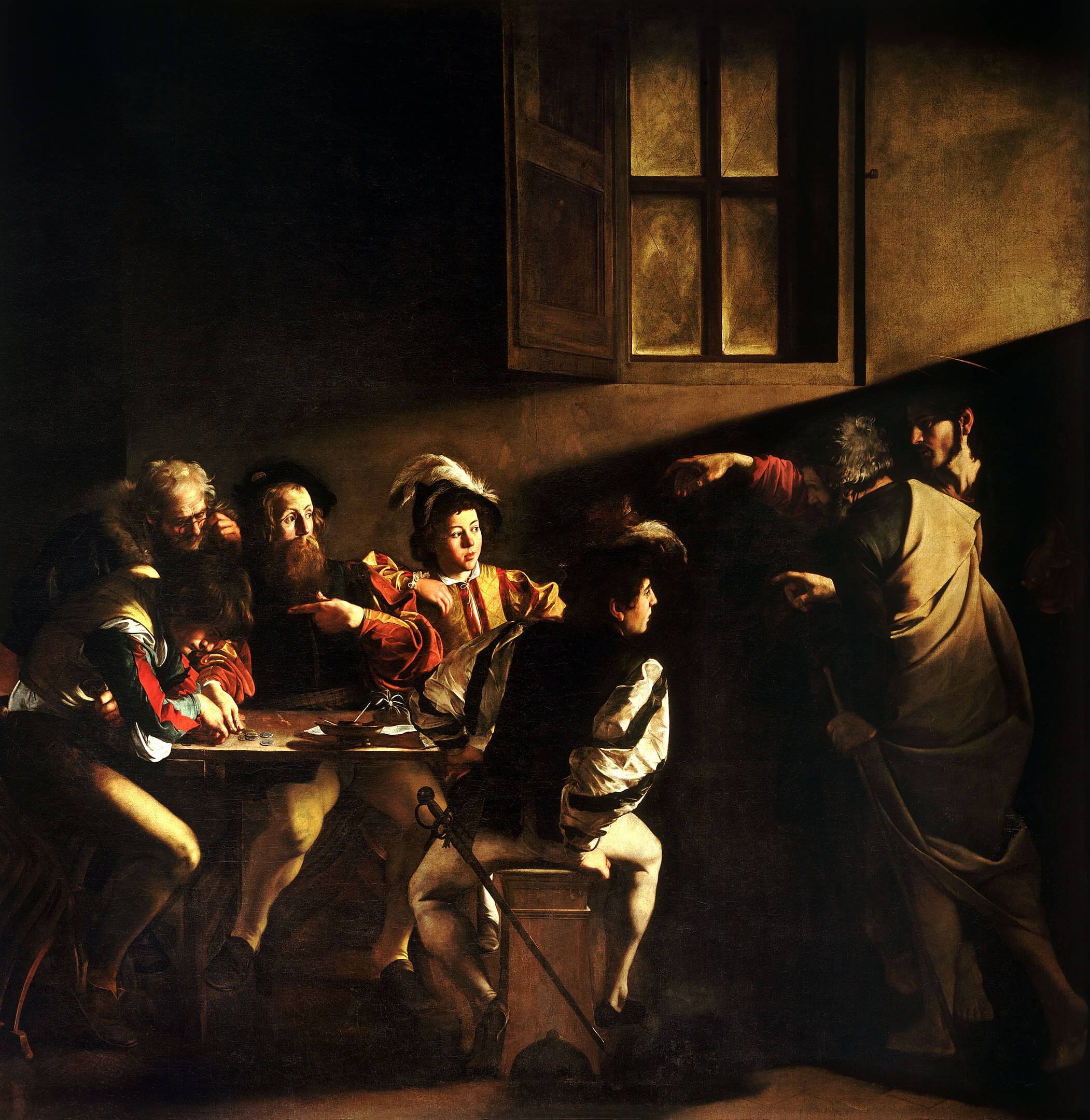 The Calling of St Matthew by Caravaggio
The Calling of St Matthew by Caravaggio
The first three books of the New Testament are Matthew, Mark and Luke. When originally written, they were not intended to be placed next to each other in a single compiled 'book'. And so, within the first three books of the New Testament, we find quite a lot of repetition, as each of these disciples recounts the life and story of Jesus.
The Gospel according to Matthew is arguably the most famous and most detailed of these books. As an example, it is the only book where we are told about the Magi visiting Jerusalem and Jesus. It is also the most Jewish of the Gospels - in structure and in language (it is originally written in Greek).
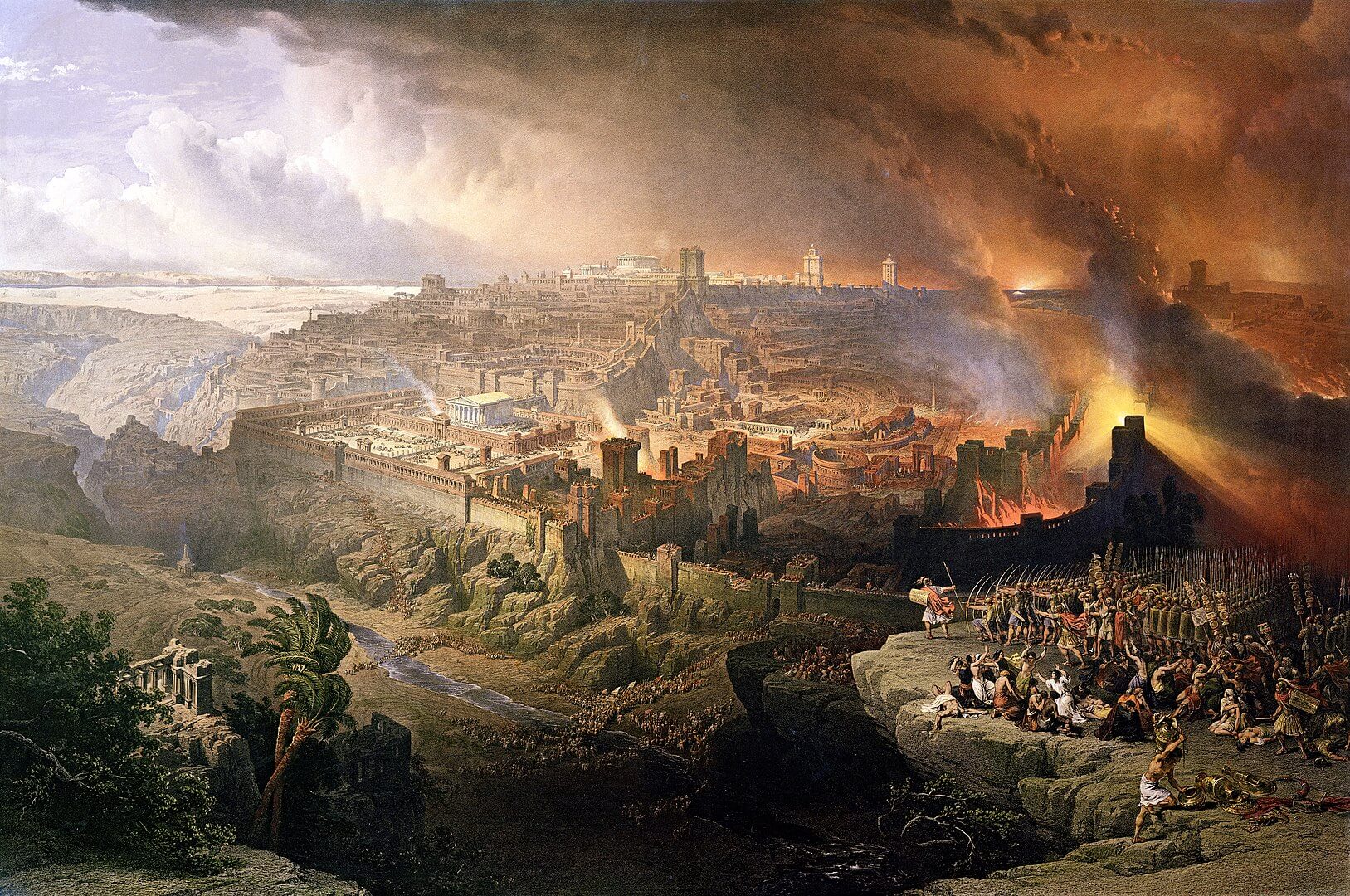 The Siege and Destruction of Jerusalem by the Romans Under the Command of Titus, by David Roberts
The Siege and Destruction of Jerusalem by the Romans Under the Command of Titus, by David Roberts
The books of both Luke and Matthew take from the book of Mark, which is widely considered to have been written first. Most scholars today agree that Matthew was written sometime between AD70 and AD100, not by Matthew himself, but by his followers. If accurately dated, the book is written within recent memory of the destruction of Jerusalem and its Jewish temple by the Romans in AD70.
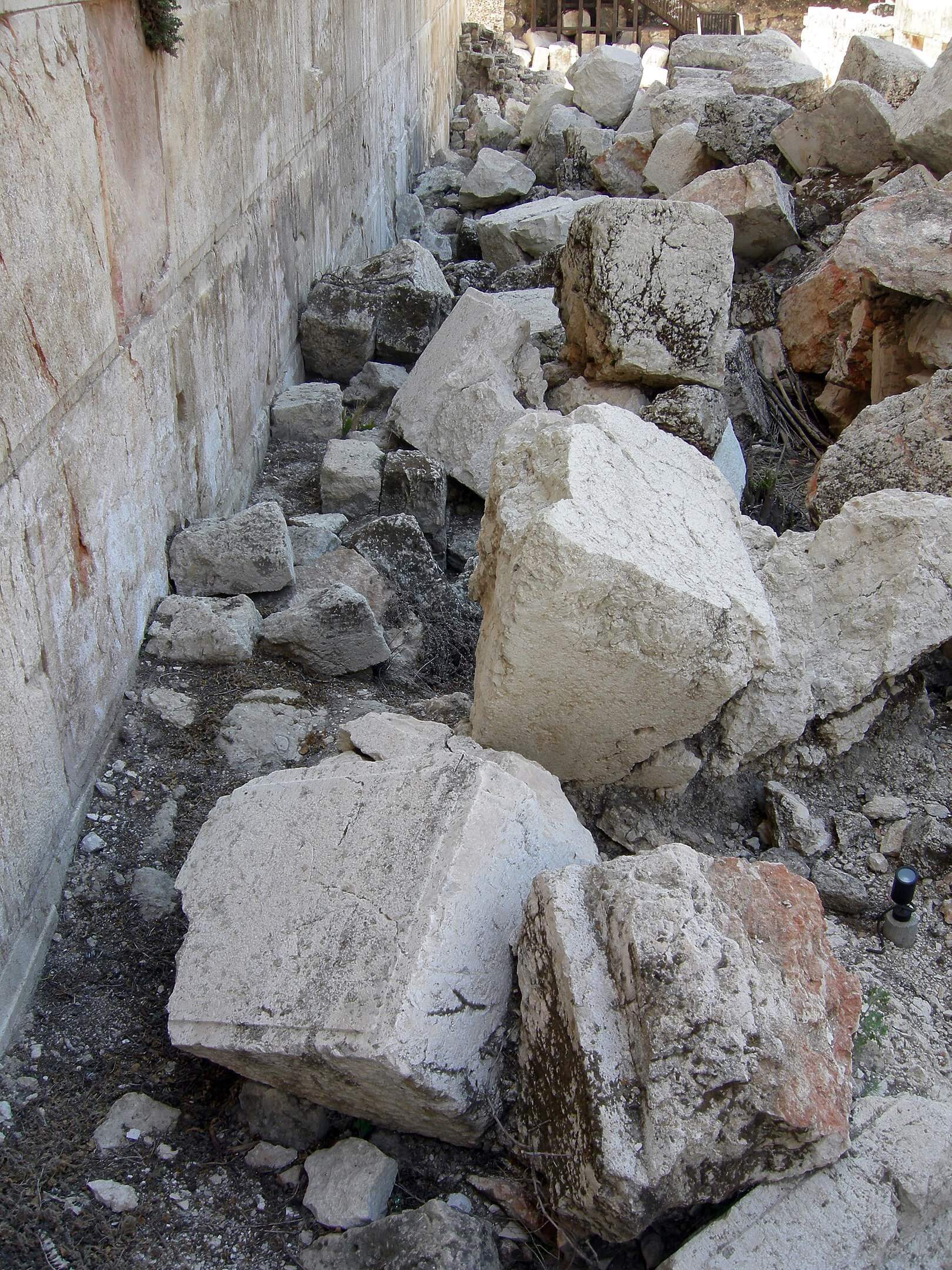 Stones from the Western Wall of the Temple Mount (Jerusalem) thrown onto the street by Roman soldiers in AD70
Stones from the Western Wall of the Temple Mount (Jerusalem) thrown onto the street by Roman soldiers in AD70
In the lifetime of Jesus, His ministry was limited to the land of Judea. Thereafter, the ministry of Matthew was similarly aimed towards Jews. The Gospel according to Matthew begins by carefully detailing Jesus as a descendant of David and Abraham. This is necessary in order for Jesus to be the Messiah spoken of in Jewish prophecy.
Several times in the gospel, Matthew is critical of Jewish Pharisees. But, he is not trying to replace Judaism with a new religion. Instead, he says Jesus is fulfilling Jewish prophecy. He instructs that Jewish scriptures should be more closely adhered to by the followers of Jesus (than they had been by 'hypocritical' Pharisees).
And yet, at the time it was written, a certain separation must have existed between Matthew's followers and many Jews simply because Matthew's followers insisted Jesus was the Messiah. The Gospel ends with the resurrected Jesus instructing “go and make disciples of all the nations". Therefore, Matthew pre-empts the spread of the faith and stands as a bridge between Judaism and the new church. No doubt, this is part of the reason Matthew is the first book of the New Testament instead of the earlier Gospel of Mark.
That the kings come to pay tribute to Jesus in Matthew further fulfils Jewish messianic prophecy. It also positions Jesus as the Son of God for gentiles (non-Jews).
Blagoslov obitelji (family blessing) and the traditions of Epiphany (Bogojavljenje) Three Kings Day in Croatia (Sveta tri kralja)
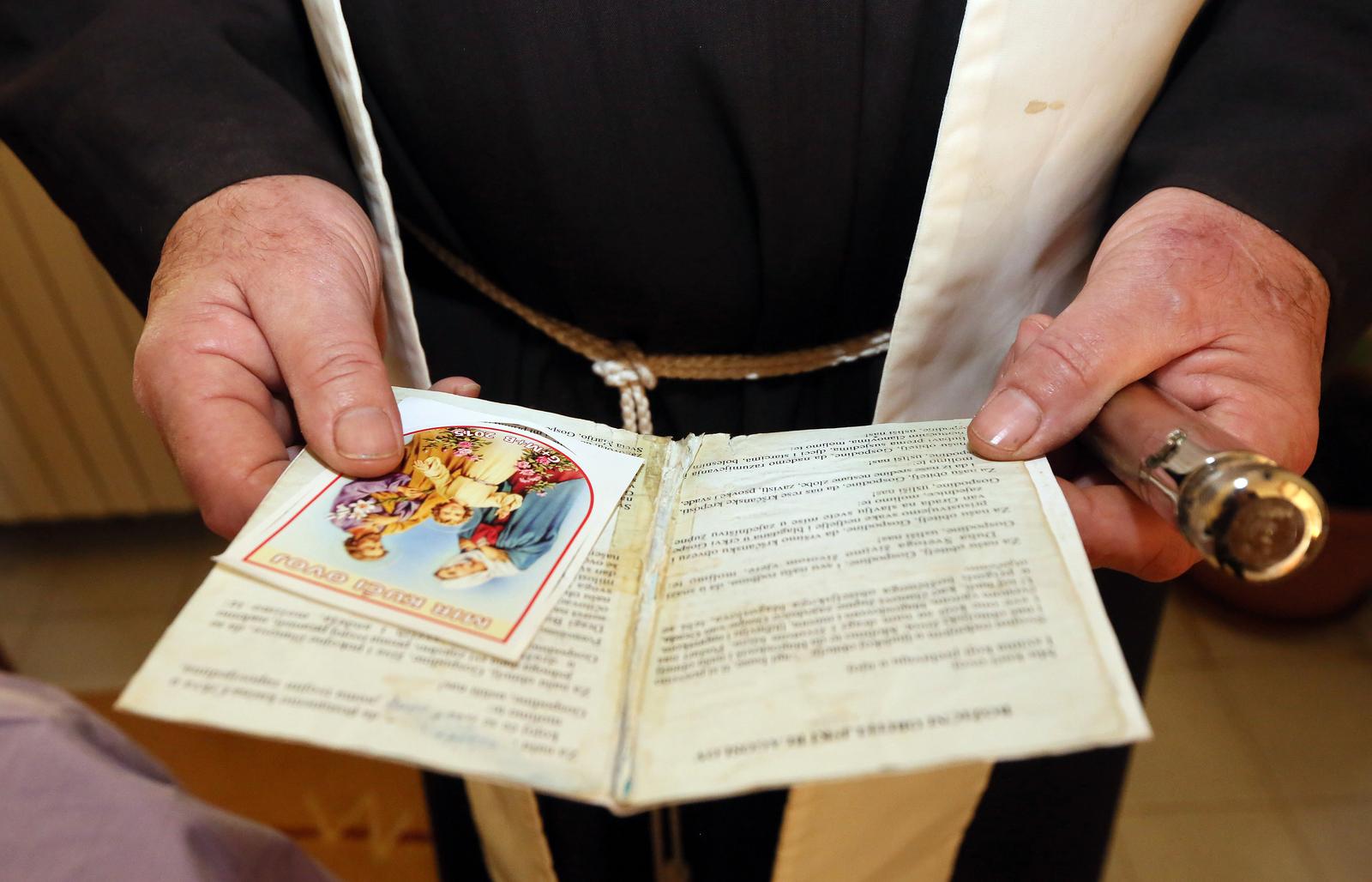 Bogojavljenje aka Three Kings Day in Croatia, by Dusko JaramazPIXSELL
Bogojavljenje aka Three Kings Day in Croatia, by Dusko JaramazPIXSELL
Traditionally, this is the day on which your local priest would visit your home to bless it and the family within. Nowadays, Croatia's population has grown so as to make this impossible. So, in the modern era, the annual blessing of home and family take place between St. Stephen's day (here) and today.
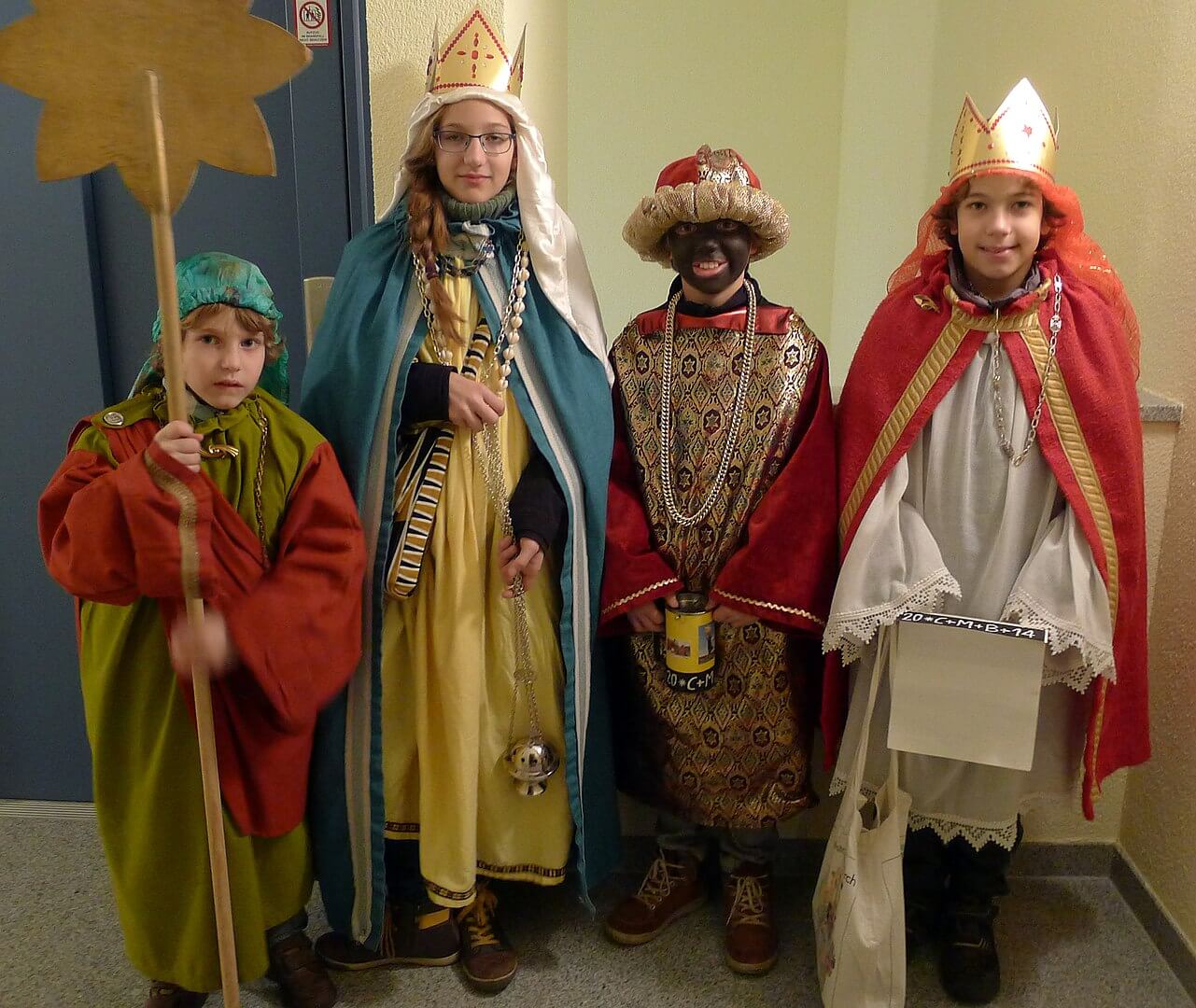 Zvjezdari in Germany, by James Steakley
Zvjezdari in Germany, by James Steakley
This is still a day of Christmas, celebration and decoration. Traditionally, the priest may have been accompanied by altar boys who rang bells to let villagers know they were on their way. These days, the altar boys could be choristers or simply young parishioners. It is not uncommon for them to sing and to be dressed as the Three Kings and carrying a star (Zvjezdari – starmen).
 Collection of stickers marking Blagoslov obitelji (family blessing), awarded on Three Kings Day in Croatia. Note the different spelling of Saint Gaspar (Croatian) / Caspar (Latin)
Collection of stickers marking Blagoslov obitelji (family blessing), awarded on Three Kings Day in Croatia. Note the different spelling of Saint Gaspar (Croatian) / Caspar (Latin)
As part of the home blessing, it was traditional for the priest to sprinkle the home with Holy water. Also, he would write in chalk above the main entrance to the home. The chalked pattern would read 20 ✝ C ✝ M ✝ B ✝ 22 - numbers denoting the year, and the cross separating the letters C (G), M and B. These are the initials of the Magi Caspar (Gaspar), Melchior and Balthazar. They are also an abbreviation of the Latin blessing Christus mansionem benedicat - May Christ bless this house. This chalking of the door signals the home has been blessed for the year and echoes the Old Testament marking of doorways by the Israelites in Egypt. As in Matthew, the tradition of Three Kings bridges Judaism and the new church. Nowadays, the chalk writing has in most instances been replaced by stickers.
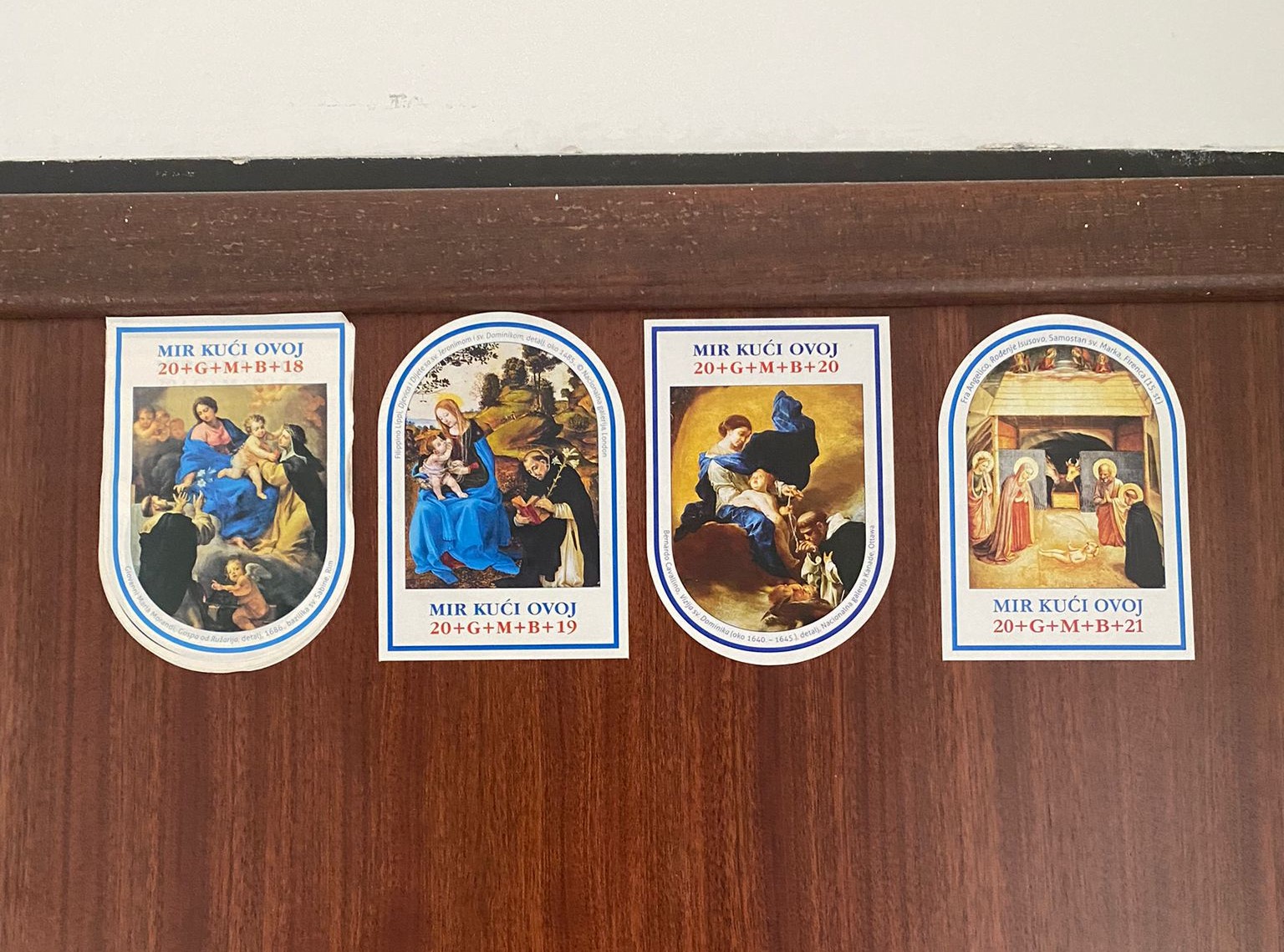 Collection of stickers marking Blagoslov obitelji (family blessing) - these will be added to on Three Kings Day in Croatia
Collection of stickers marking Blagoslov obitelji (family blessing) - these will be added to on Three Kings Day in Croatia
In the distant past of Three Kings visits, a greater significance was put on the blessing of the home and property. But, in order to diminish the supernatural aspect of 'warding off bad spirits from the home', the church has continuously aimed to make the blessing more about the family gathered within. These days, that is reflected in the contemporary wording of the blessing.
This family aspect of the blessing actually goes back an incredibly long way. This time of year is one of the least demanding for those who work in farming or agriculture. It was easier to gather together the full family for the blessing at this time than at almost any other during the year. This tradition still exists – it is customary for the full family to be gathered together when the priest visits.
Another tradition that persists is the cleaning of the home prior to the visit. Although, this is not only because the priest is coming. Remember, Bogojavljenje is Jesus's revelation as the Son of God to all those outside Judea and Judaism – as represented by the Three Kings.
The Three Kings give the gifts of frankincense (signifying his origin from God), gold (signifying his royal status on earth) and myrrh (a balm, signifying that Jesus is a man). The cleaning and blessing of the home welcomes Jesus into Croatian home – as a man he walks among us.
In the modern era, it is customary for the family to give a monetary donation to the priest at the time of the visit. This is not traditional nor is it 'payment' for the blessing or visit. God's blessing cannot be bought or paid for, and is not denied to anyone who asks for it - whether he had money or not. That the traditional annual donation takes place on this visit is a matter of convenience.
Non-Croatian traditions of Epiphany (Bogojavljenje) Three Kings Day in Croatia (Sveta tri kralja)
 Christmas tree recycling, by Ruff tuff cream puff
Christmas tree recycling, by Ruff tuff cream puff
Bogojavljenje is one of the oldest Christian holidays marked in the Croatian Catholic calendar. The fact the day remains a national holiday in Croatia attests to its continued importance.
The laziest and most incorrect contemporary 'custom' attributed Croatian Bogojavljenje is that it's the day you should throw out your Christmas tree and take down your decorations. Wrong. The second biggest modern error is to regard Bogojavljenje as the end of Christmas.
The Christmas tree is not a traditional part of Croatian Christmas. It is German. Its widespread popularity only really began from around 1850 in the UK (thanks to their German monarchy importing it) and from 1870 in the USA. Only after that did the custom travel internationally. To regard the discarding of Christmas trees as a fundamental part of a centuries-old tradition displays an extremely limited and shallow knowledge of Croatian traditions.
In fact, it is Croatian tradition for the local priest to visit the family with the home still decorated. Typically, the priest was fully embraced into the family Christmas setting when he called – jaslice (nativity), candles, log fire, decorations and all. In the past, the priest was usually offered food and drink from the family. In many instances, they would all enjoy the seasonal food together.
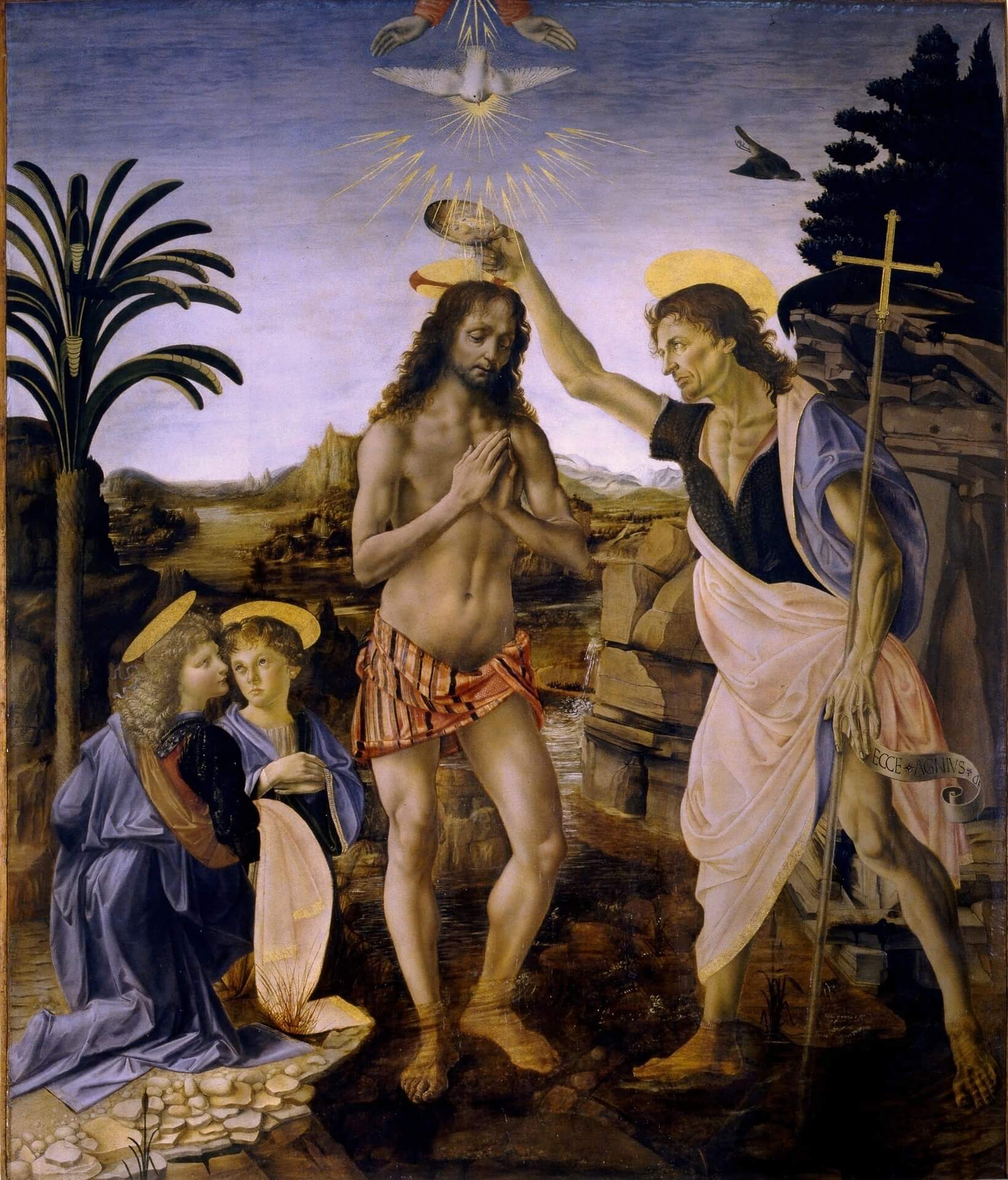 Baptism of Christ, by Leonardo DaVinci
Baptism of Christ, by Leonardo DaVinci
Advent starts on the fourth Sunday before Christmas and ends on Christmas Eve (here). Christmas begins in the evening of Christmas Eve. Like elsewhere, Epiphanytide begins on Three Kings Day in Croatia. But, that does not mark the end of Christmas. In fact for Catholics, Christmas ends officially on the Feast of the Baptism of the Lord, celebrated on the Sunday after Epiphany - Three Kings Day in Croatia (in 2022, Sunday 9 January).
Accordingly, the most traditional of Catholic houses and churches in Croatia can be seen displaying their decorations until then. Three Kings does mark the end of the '12 Days of Christmas', but this is a secular duration of Christmas and has little to do with Croatian tradition.
With grateful thanks to Iris Ćelić, family Kutleša / Marinić, Pater Ivan Dominik Ilicic and Marko Čurković
Enjoy the Holiday Magic in Opatija With a 360° Virtual Walk
Take a virtual walk around Opatija in its holiday gear, from enchanting parks and iconic hotels to the famous seaside promenade lungomare
Although Christmas has passed, cities all over Croatia continue to don their holiday gear for another week or so. While most Advent programmes typically last through the first week of the year, come January 1st, they somehow just don’t feel the same anymore.
That being said, the next few days leading up to New Year’s Eve are a perfect opportunity to enjoy the festive atmosphere in town while the lights and decorations are still up.
Don’t fancy mingling with crowds (or getting off the couch) these days? We get you - thankfully, there’s a way to stroll around town without having to leave the comfort of your own home.
Screenshot of Opatija Advent page, photo © Rajko Mrvos
Today, we present to you a lovely virtual tour of Opatija, the historic town on the coast of Kvarner Bay. Created by Rajko Mrvos in collaboration with Opatija Tourist Board, the 360° tour is composed of 30 panoramic photos showcasing the town in all its glamorous holiday glory.
Set to a festive musical backdrop, the tour will take you from Opatija’s enchanting parks and iconic hotels to the famous seaside promenade lungomare. You can toggle between daytime and nighttime panoramas, or take a walk with 360 VR video footage:
Head to the Opatija Advent page to enjoy the splendid landscapes, and check out Rajko Mrvos's ZooM Studio Youtube Channel for more virtual tours of Croatia.
Want to learn more about Opatija? Look no further than our Total Croatia guide Opatija in a page.
Croats, Germans and Slovenes Make Up Croatian Christmas Tourism Numbers
December the 28th, 2021 - Croatian Christmas tourism figures have been dominated by Croatian tourists exploring the rest of the country, Slovenian visitors and of course, the always faithful Germans.
As Poslovni Dnevnik/Suzana Varosanec writes, along with the Slovenes and Germans, Croats exploring their own country have so far been the most numerous guests staying across the Republic of Croatia during the Christmas and New Year holidays, according to the latest sales statistics of Croatia Luxury Rent.
In terms of Croatian Christmas tourism numbers, these are followed by Austrians, Italians, Hungarians, Poles and Serbs, and in addition to the above markets, guests from France, Switzerland and neighboring Bosnia and Herzegovina are also quite numerous in the country at this moment in time.
As they announced, they are especially happy that the number of domestic guests is systematically growing from year to year and that "Croats along with Germans and Slovenes will make up the largest number of guests who will stay in Croatia over 2021's festive period.''
"Croatian guests topped the list of the most numerous guests during last year's festive period, which was to be expected due to the situation and the events caused by the coronavirus pandemic at the time. This festive season, due to somewhat more liberal measures and the possibility of crossing borders much more easily, the situation has changed somewhat, so, along with the Croats, German tourists are the most numerous in CLR accommodation units, while the Slovenes are in third place,'' they explained when looking at their Croatian Christmas tourism figures.
This year's sale of festive tourism arrangements has given rise to a very specific situation according to which, according to them, Central Dalmatia has almost equated the percentage of the number of arrangements sold up north in Istria. However, in the last ten days, things have returned to their earlier standards.
"Istria is at the top with an almost 45 percent share in the total number of reservations sold, followed by Dalmatia and the islands with 29 percent, Kvarner with 18 percent, and the continental part of the country, which accounts for 8 percent,'' according to the CLR.
For more, check out our dedicated travel section.
How to Make Traditional Christmas Cookies, Level: Beginner
What happens when a beginner baker attempts to make traditional Christmas cookies? A lighthearted personal blog to document a slightly chaotic evening of holiday baking
Christmas snuck up on me this year. It’s the first holiday season in four years that I’m spending with my family, and I couldn’t be more overjoyed - looking forward to our traditional chaos of decorating the tree on Christmas Eve and gobbling up bakalar like there’s no tomorrow. I even managed to buy most presents on time, but there’s one thing I forgot: Christmas cookies!
Save for helping my mom with holiday baking while I was growing up, I’ve never really tried my hand at making my own Christmas (or any other) cookies. I’m sure this comes easy to a lot of people, but I shy away from working with any kind of dough (especially if yeast is involved - rest assured I did not partake in the bread-baking obsession at the start of the pandemic). This Christmas, however, I’ve been feeling ambitious and picked a few recipes to try out. I was even sensible enough to stock up on all the ingredients I’d need.
And then I forgot to plan for the actual baking part. The holiday schedule got hectic as it tends to do, and last night I realised Christmas is a few days away and I’d have no time for any baking shenanigans after the 22nd… So I thought to myself, let’s just make one kind of cookie. One, and I’d consider this holiday season a success. My amazing mom’s going rampant with holiday baking as usual so we won’t be facing a shortage of sweets any time soon - here’s her baking list for the next two days, featuring a few Croatian holiday hits:
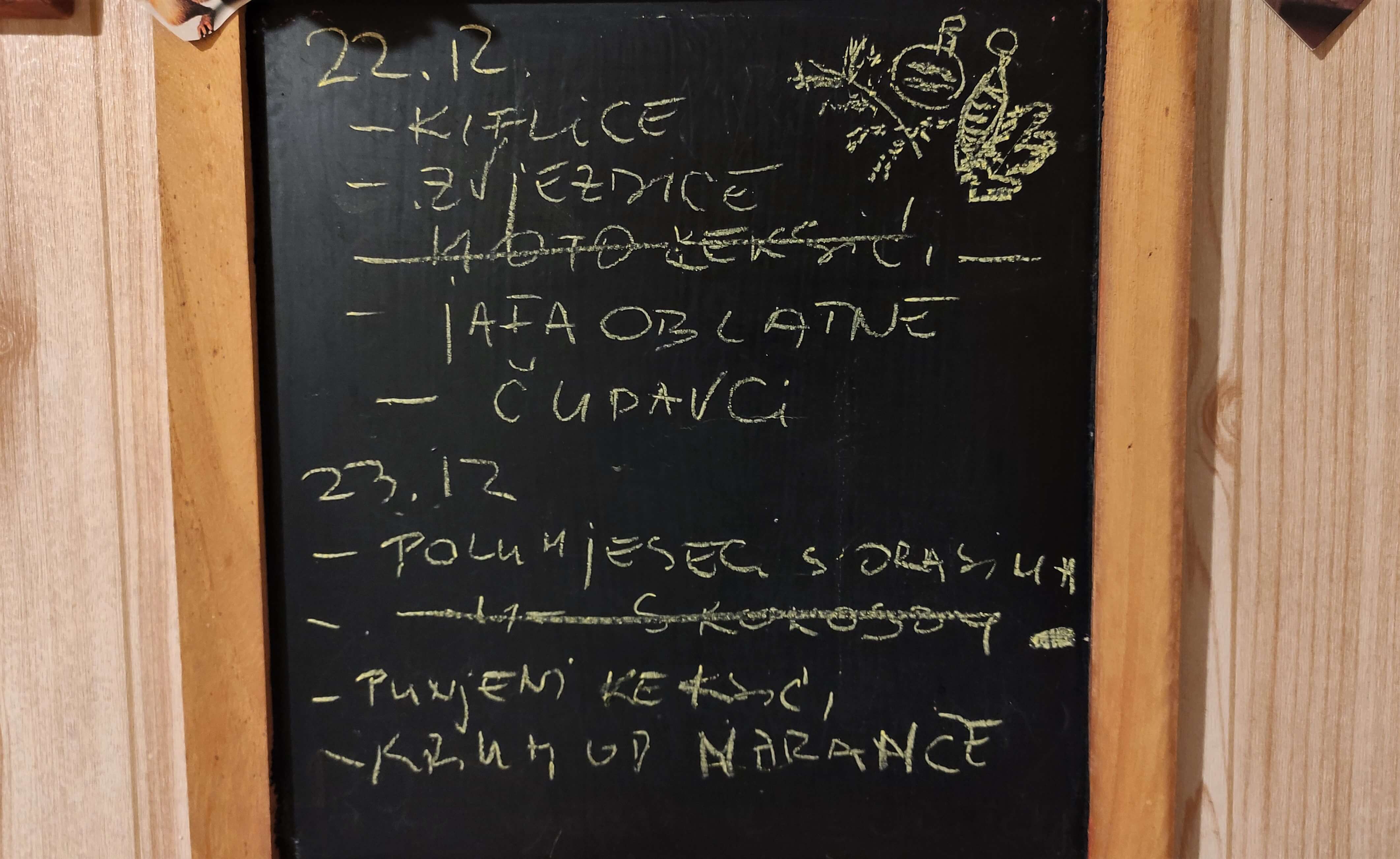
Are the crossed out ones those you’ve already made? I asked.
Nope, those are the ones I’ve given up on, she said.
Still, there’ll be plenty to go around, and so I got back to the single thing on my to-do list. Should be enough to save face, if all goes well. I rolled up my sleeves and got to work - chaotic, messy work heavily relying on improvisation.
You’ve surely seen your share of dreamy food blogs with perfectly styled photos and a highly skilled baker behind the scenes. This is not one of those blogs. While I consider myself a decent home cook, I wouldn't last two hours on the set of The Great British Bake-Off… but I’m not going to let that stop me. After all, it’s the holiday spirit that matters! Join me as I (attempt to) make linzer cookies, a Christmas staple in Croatia.
Linzer are buttery sandwich cookies filled with jam of your choice. I don’t remember a holiday season without an ungodly amount of linzer cookies in our pantry. It’s one of those things that taste better the longer you let them rest, so it’s prudent to plan ahead and double or triple the recipe to make sure you don’t run out before the season is through.
Out with the ingredients: flour, sugar, baking powder, vanilla sugar, lemon zest, butter and egg.
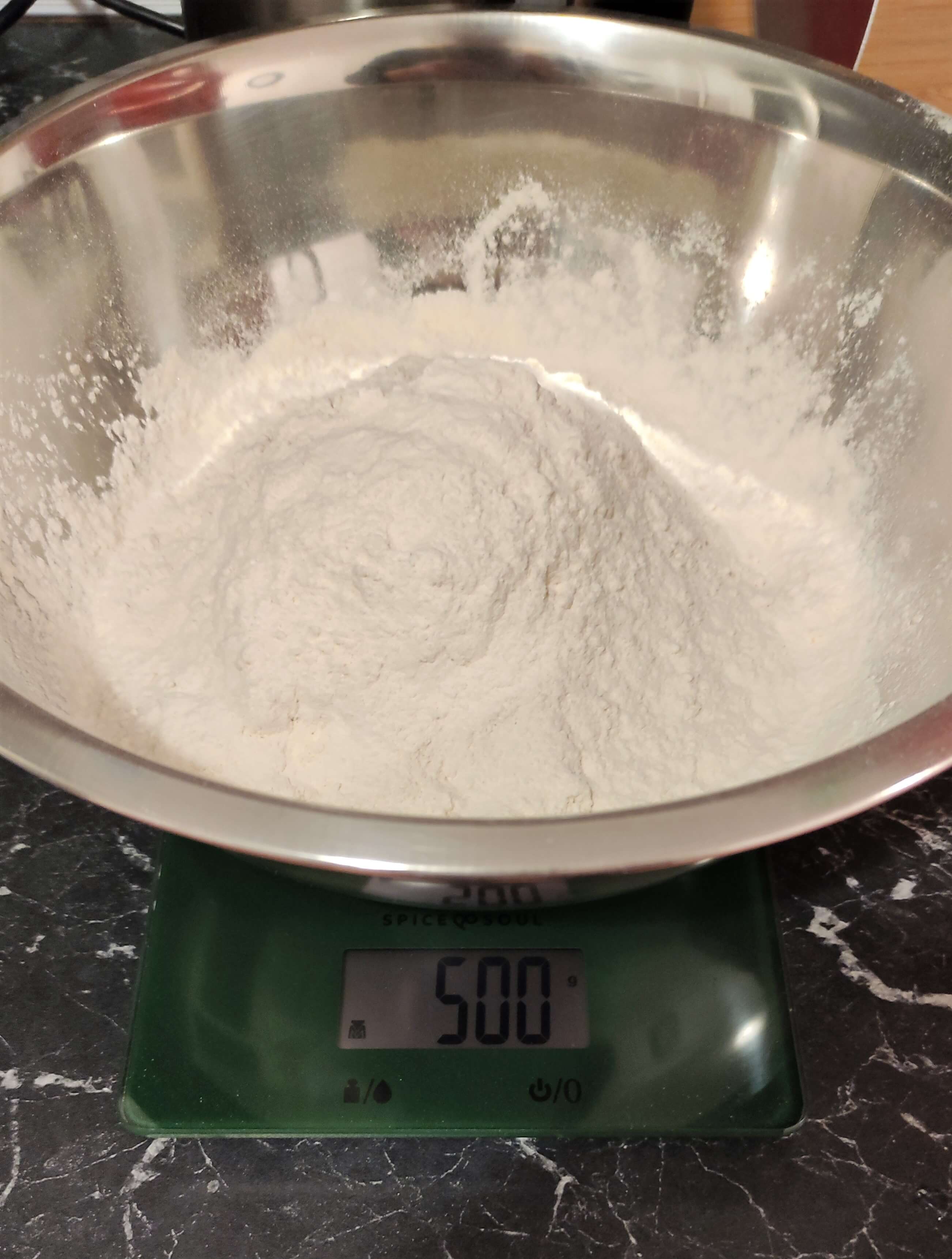
Extremely satisfying.
The recipe says to 'combine all ingredients to make a dough'. This means nothing to me. Combine them in what order? Isn’t baking a precise art? It was too late in the day to call mama for instructions, so I did some googling and found out there seemingly was no single right way to start off. Some say to cream butter and sugar with a mixer until fluffy and then add the other ingredients, some opt to combine the dry ones first and then cut in the butter.
At past 11pm, I don’t think my neighbours would enjoy the first option, so I skipped the mixer. In with the butter! A bit of elbow grease later, what wasn’t looking promising at first quickly turned into nice smooth dough. We actually might be getting somewhere:
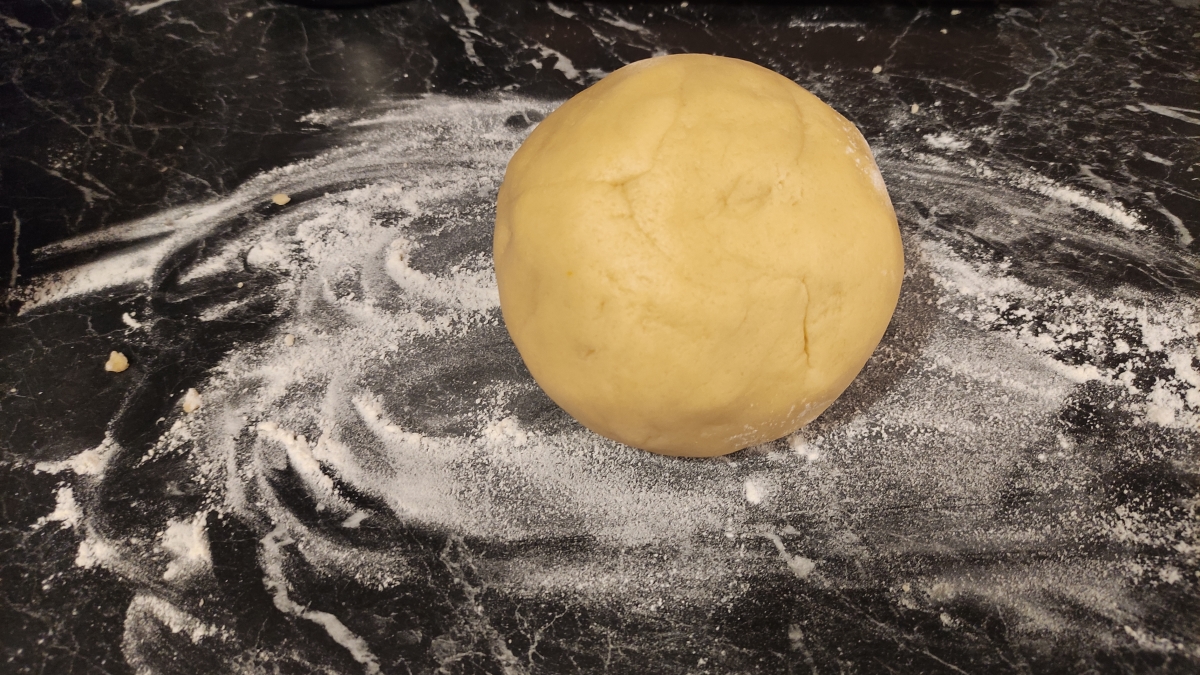
I popped the dough in the fridge to rest and went to prep the stuff I’d need for the next step. Thankfully, I recently bought a proper rolling pin - the last time I needed to roll out something, I ended up using an empty bottle of ginger ale. It was a nice glass bottle. It did the trick. I'm happy to have the rolling pin anyway.
However, I realised I'd overlooked a few crucial things in regards to the linzer project. One, I have a single baking tray, which isn’t a fun prospect knowing you’ll have at least 5-6 six trays’ worth of cookies to bake. Two, while I did pick up some festive snowflake-shaped cookie cutters, I forgot that linzer cookies feature a cutout in the top layer for the jam to peek through. Do I have anything at home to punch a hole in my cookies?
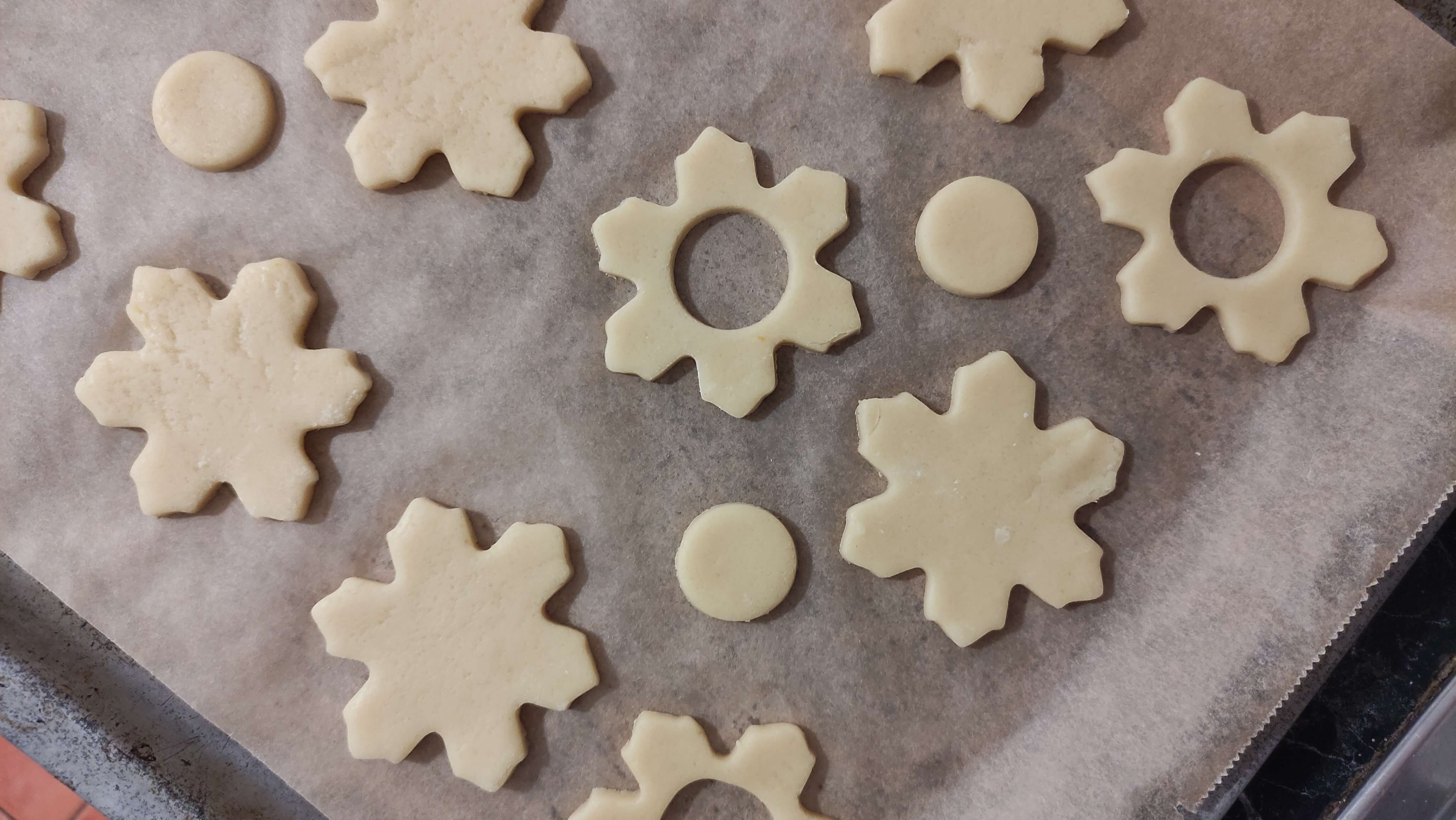
I fumbled through my kitchen drawers and found a metal tea strainer. This will do for the bigger cookies, what about the smaller ones? Too bad I don’t have a thimble, the reliable hole-punching tool that I've more often seen used in baking than sewing.
What I do have is a well stocked bar, so I snagged a tiny metal cap off of a mini bottle of Austrian schnapps. Consider this a nice homage to the Austrian origin of linzer cookies.
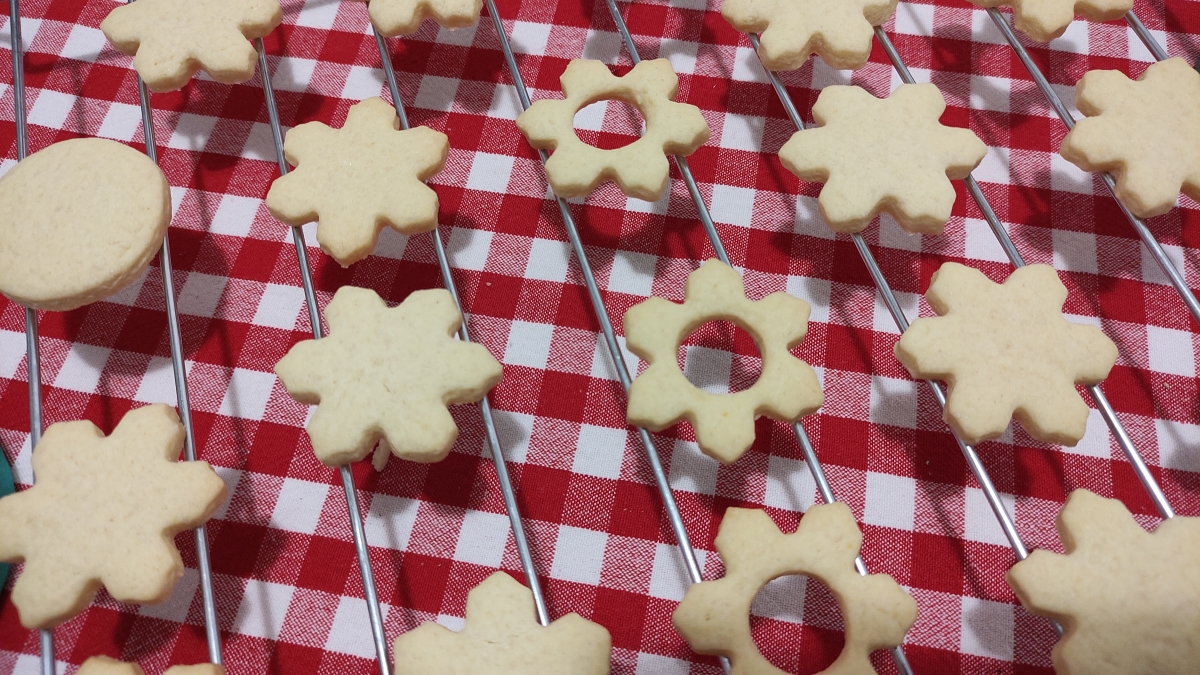
I promise these were not so ghostly pale in real life.
Not the most elegant solution, but needs must. It’s not too late to turn away, dear reader, because things only get more crafty from this point on.
The snowflake cookies turned out a bit difficult to handle due to their specific shape, and I wanted to make a batch of simple round cookies as well. You’ve guessed - no round cookie cutters in the household, but I learned a wine glass does the trick quite nicely:
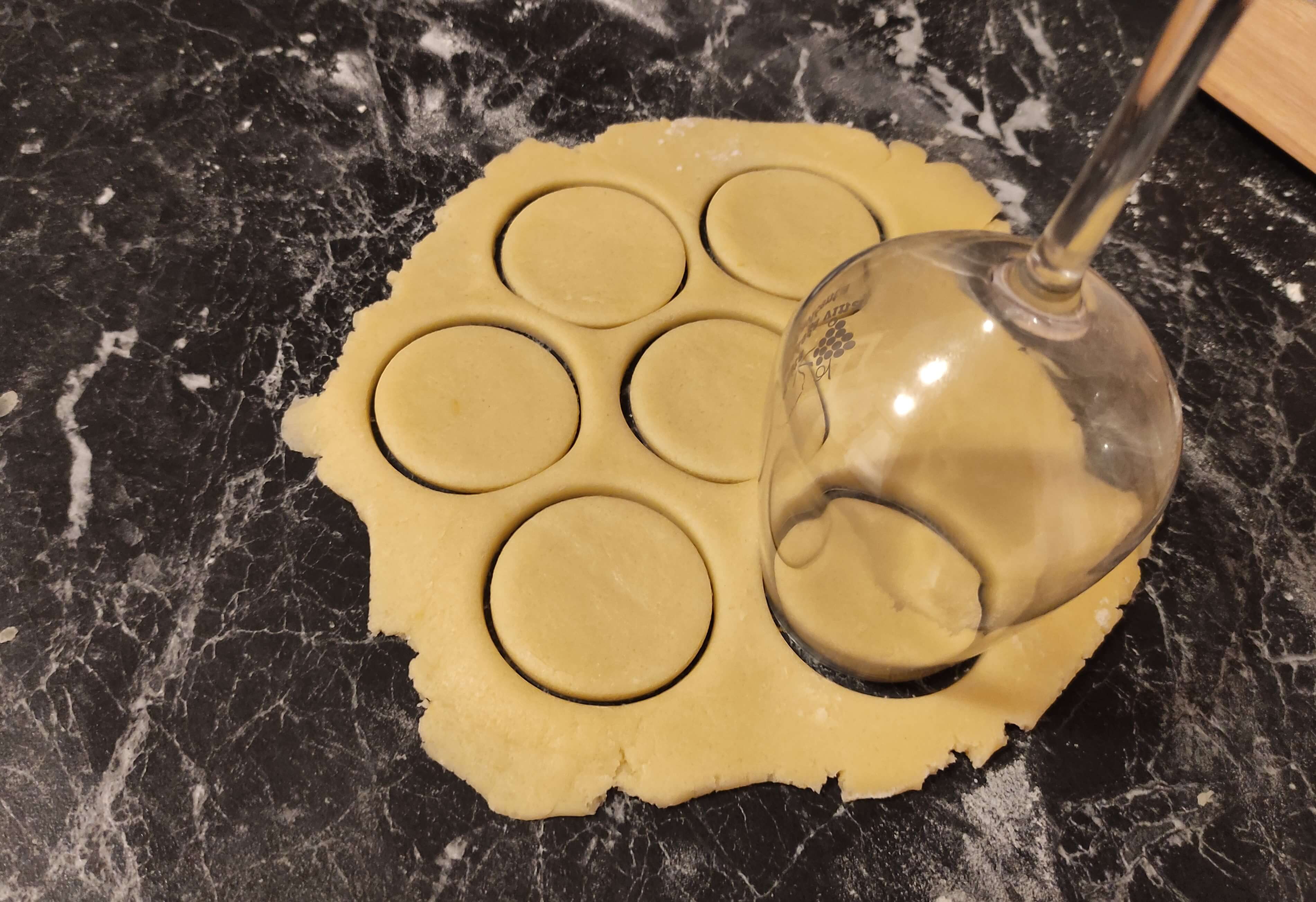
A little test run - seems to work.
At this point, it’s 1am and I’m questioning my life choices. The last batch is in the oven and I still have the final step to complete: warm up some jam on the stove and assemble the little linzer sandwiches. The jam firms up as it cools down, acting like glue that ensures the cookies stick together and stay in place.
Let’s not forget some dramatic flair, a holiday-themed reenactment of Scarface with a mountain of powdered sugar covering every inch of my kitchen counters. Luckily I remembered to generously dust the top cookies with sugar before assembly, so that the jam peeking through the cutout remains nice and glossy. It’s a lovely pop of colour that gives linzer cookies their distinctive appearance. Success!

I've a talent for food photography as well.
A little uneven, but delicious - I was surprised how decent they turned out considering I MacGyvered my way through the whole affair. I have a bite to make sure they’re fine to serve to others, and I feel that unmistakable taste of the holiday season.
Oh, and a final tip. To ensure that people in your household don’t break into your stash of cookies too soon, store them where noone will think to look - in the sewing tin ;)
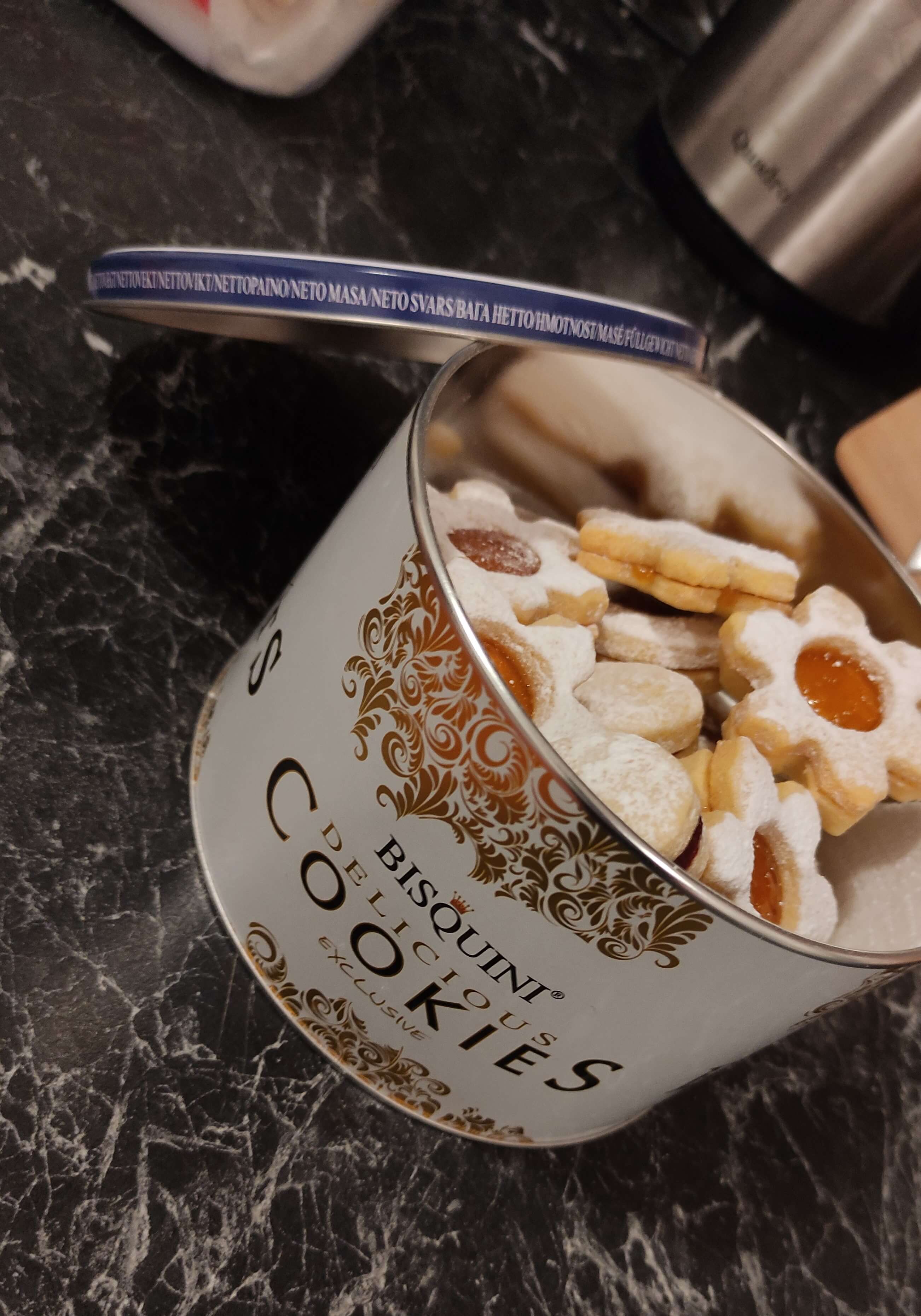
Wishing you a wonderful holiday season full of delicious treats. Happy Christmas!
Osijek Christmas Tram Is the Brightest Tram in Croatia
December 10, 2021 - The Osijek Christmas tram ride is a unique Advent experience in the Slavonian metropolis. This year, there are two appropriately decorated trams on the regular line that you can catch every day and experience an unforgettable Advent ride through the city on the Drava, which began in 2011.
Recognizable, traditional, the brightest tram in Croatia, the Osijek Christmas tram is visited by almost 15,000 people in the season, and this year it shone in full glory, reports Turističke Priče.
You can find the schedule of the holiday tram at this LINK.

Photo: Osijek Tourist Board/Facebook
The size of a city is not defined by the number of kilometers or the number of inhabitants but is measured by the size of the heart, the strength of the spirit, the kindness of the people. Osijek has long been said to be a "city made to measure" and is big enough to fulfill your needs, desires, dreams and small enough to feel safe, comfortable, and intimate. Big enough to organize the longest walk around the city, small enough to adapt the concept of the Advent celebration to the current situation in a short time.
The senses conceived their Advent through the concept "it is not standing but moving, and it is not a place but a journey". Advent, conceived as a movement around holiday-decorated locations, revived Osijek, showed the character and spirit of Osijek, and revived memories of other times when daily walks and full streets were the main motives for good fun in Osijek for all generations.
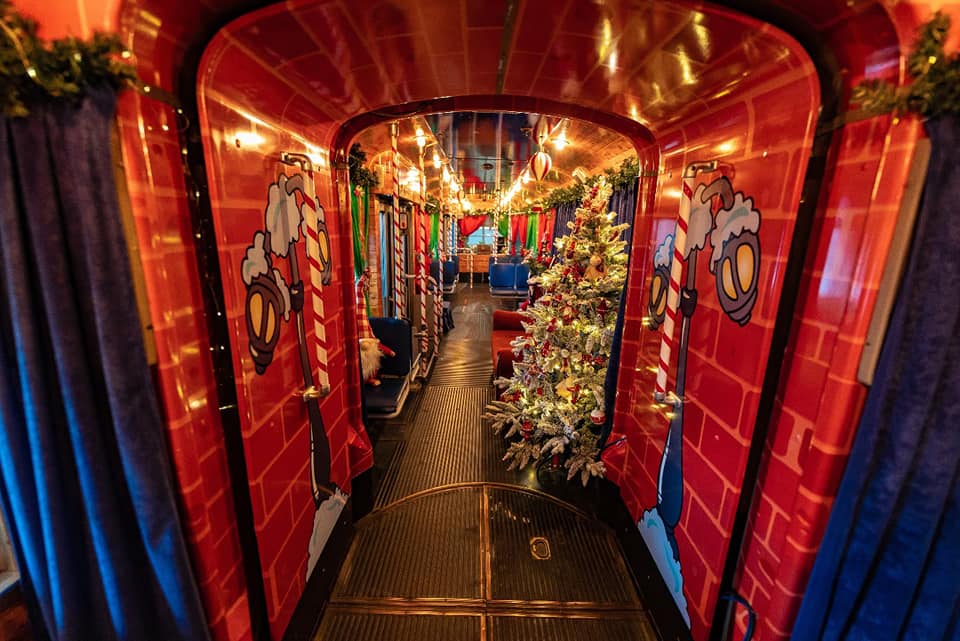
Photo: Osijek Tourist Board/Facebook
And the only real success of Advent is happy and smiling people. Positive emotions, sparkle in the eyes, gratitude, togetherness, which is not lacking in the Slavonian metropolis, which lives 354 days a year with full lungs.
If you want to learn more about the breathtaking capital of Slavonia, be sure to check Total Croatia's Osijek in a Page here.
For more on travel in Croatia, follow TCN's dedicated page.
5 Art Markets for Unique Gift Shopping This December
Holiday shoppers in search of unique gifts have plenty to look forward to in December. Looking to shop local this Christmas? Here are five art markets that are taking place in Croatia in the next few weeks
Several art markets will be popping up all over Croatia in the next few weeks, featuring local artists, artisans and other creatives. Have a look at our list, and in case one of these fairs is taking place in your area, go give the talented makers some love!
Christmas artBazaar 2021 (Rijeka)
After a two year break, the Christmas edition of the artBazaar market is back in Rijeka!
artBazaar is an urban market project aiming to promote local brands and artists who create high-quality handmade products. The market typically takes place in Rijeka twice a year, in spring and at Christmas time, and has already had over 20 instalments.
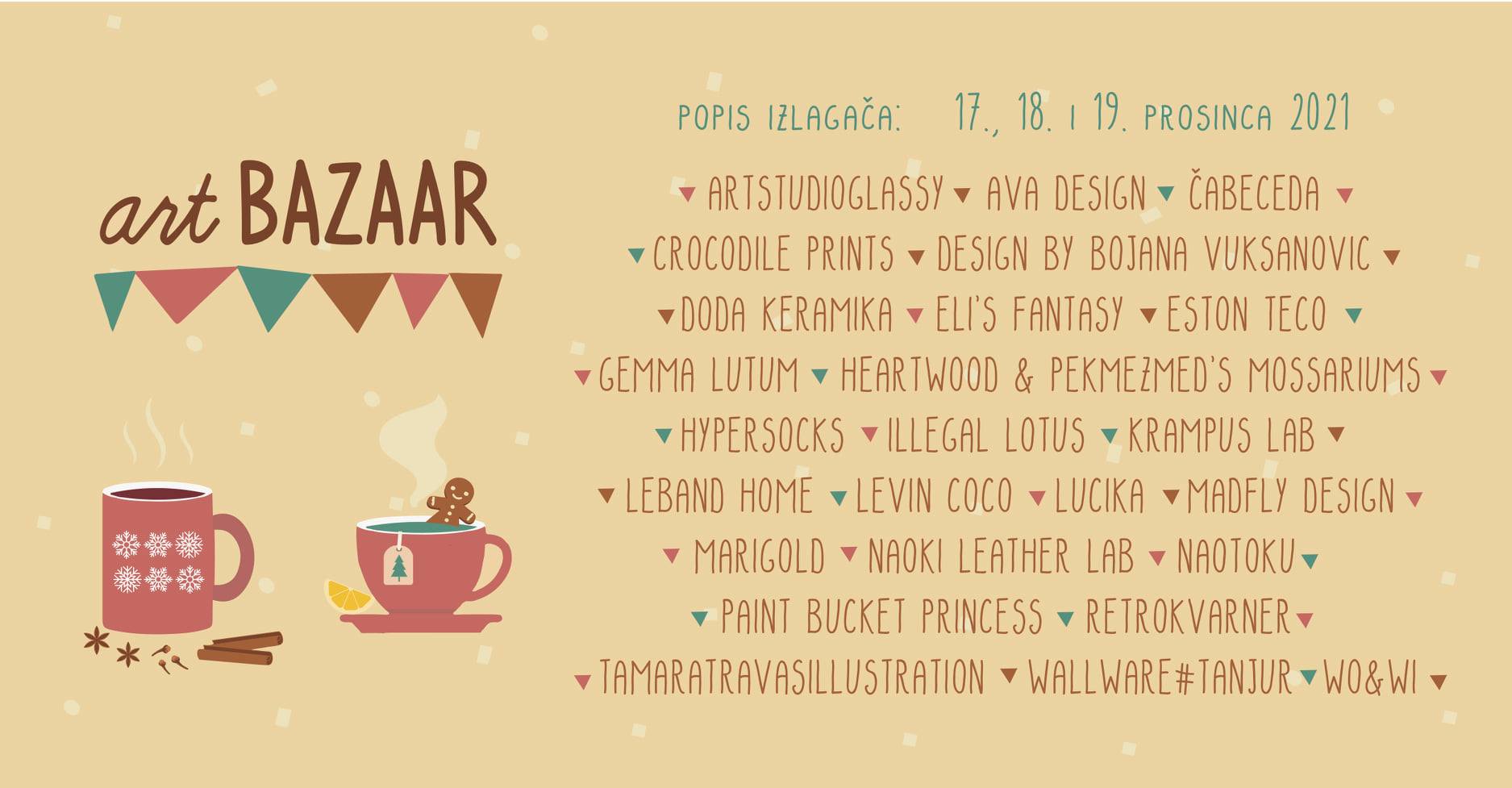
Participating artists
This year, we’ll see 25 artists and brands present their work at the artBazaar market at a unique location: the Children’s House, a wonderful centre built purposely to host events and activities intended for kids. It’s a place beaming with good vibes and creative energy, and as such a perfect location for a craft fair! Of course, visitors of all ages are welcome to the artBazaar which is taking place for three days on the weekend before Christmas.
The event is part of the week-long Winter Story at Benčić programme that will also see music shows, theatre plays, film screenings and other attractive events between December 13th and 19th.
Date: December 17th - 19th
Working hours: 12pm to 8pm
Location: Dječja kuća (Children’s House), Art quarter Benčić
Address: Ul. Nikole Tesle, Rijeka
Click here for the Facebook event.
HUSH HUSH Christmas Market (Zagreb)
The HUSH HUSH art market is back this Christmas, gathering designers and artists who’ll display their new collections and products in the Museum of Contemporary Art in Zagreb.
Stop by the museum this weekend and browse a range of beautiful products that are locally manufactured and largely handmade. The makers will be displaying jewelry, clothes and accessories, home decor, ceramics and even plants! Plenty to choose from and definitely a good place to check off a few presents from your Christmas shopping list.
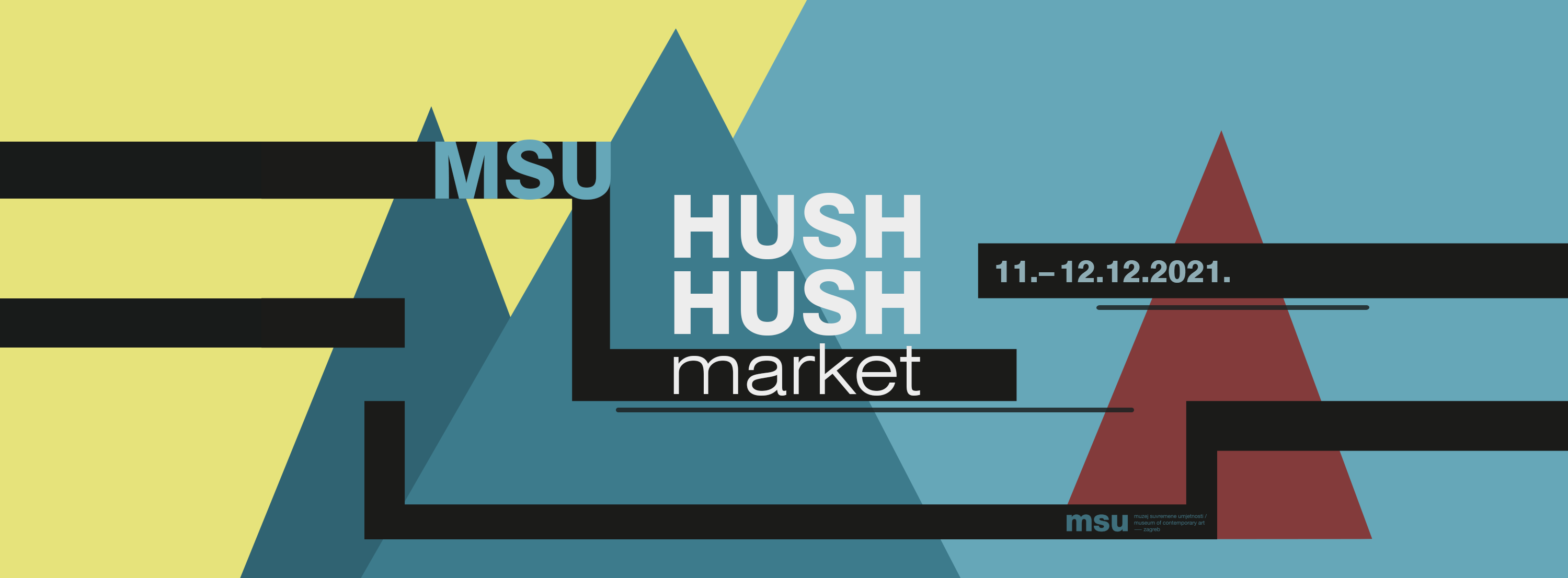
Date: December 11th - 12th
Working hours: 11am to 7 pm
Location: Museum of Contemporary Art Zagreb
Address: Avenija Dubrovnik 17, Zagreb
Click here for the Facebook event.
Creative collective MADE BY: (Zagreb)
The creative collective MADE BY: brings together artists, designers and manufacturers of handmade products. Some artists and brands are featured at their virtual fair (check out the site and the webshop here), but they also have an opportunity to take part in a creative fair which will have its 5th instalment this December.
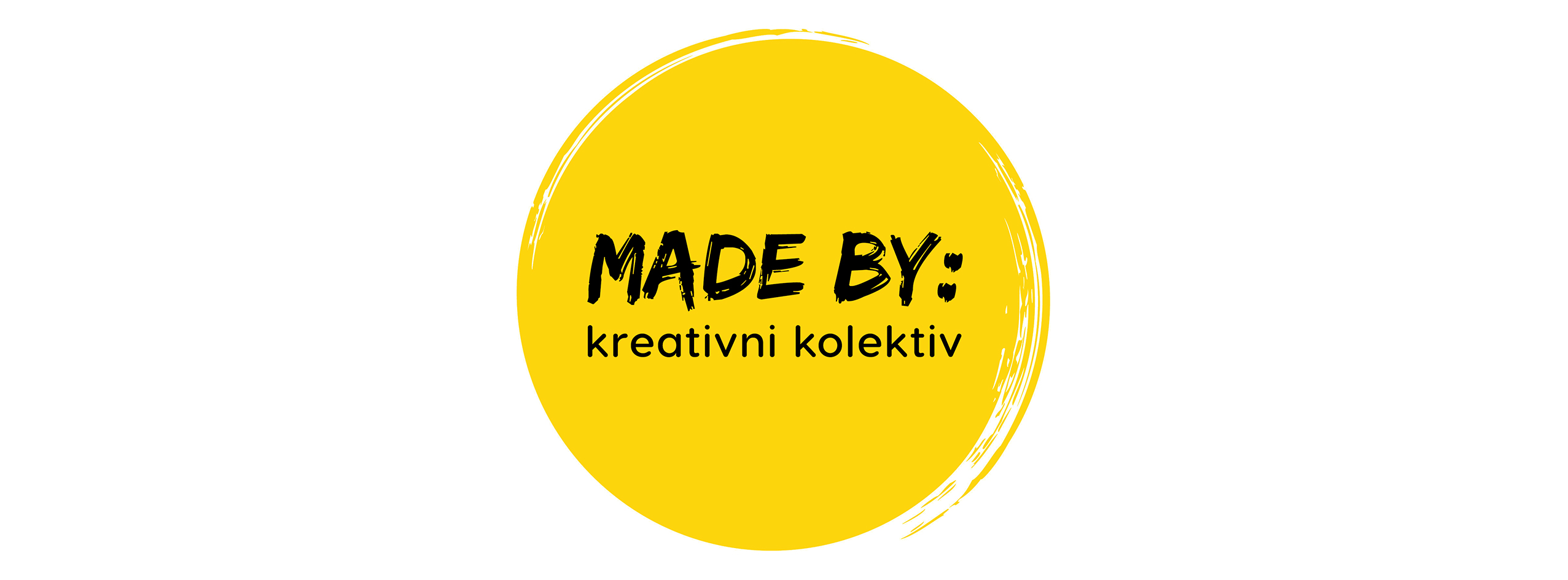
Forty creatives from Croatia and the region will be showcasing their products at the MADE BY: creative fair. The event will take place the weekend before Christmas at the seat of the Croatian Journalists’ Association, a beautiful landmark in downtown Zagreb.
Date: December 17th - 18th
Working hours: 10am to 8pm
Location: Novinarski dom
Address: Perkovčeva 2, Zagreb
Click here for the Facebook event.
Q’ARTY PARTY by Project Ilica (Zagreb)
Ilica street in Zagreb will be turning into a lively open market on December 19th for the winter edition of the popular Q’ARTY PARTY event.
Apart from numerous creatives who’ll be presenting their unique products, the fair will see students of the Academy of Art in Zagreb displaying and selling their artwork - Cash and Carry is the way to go.
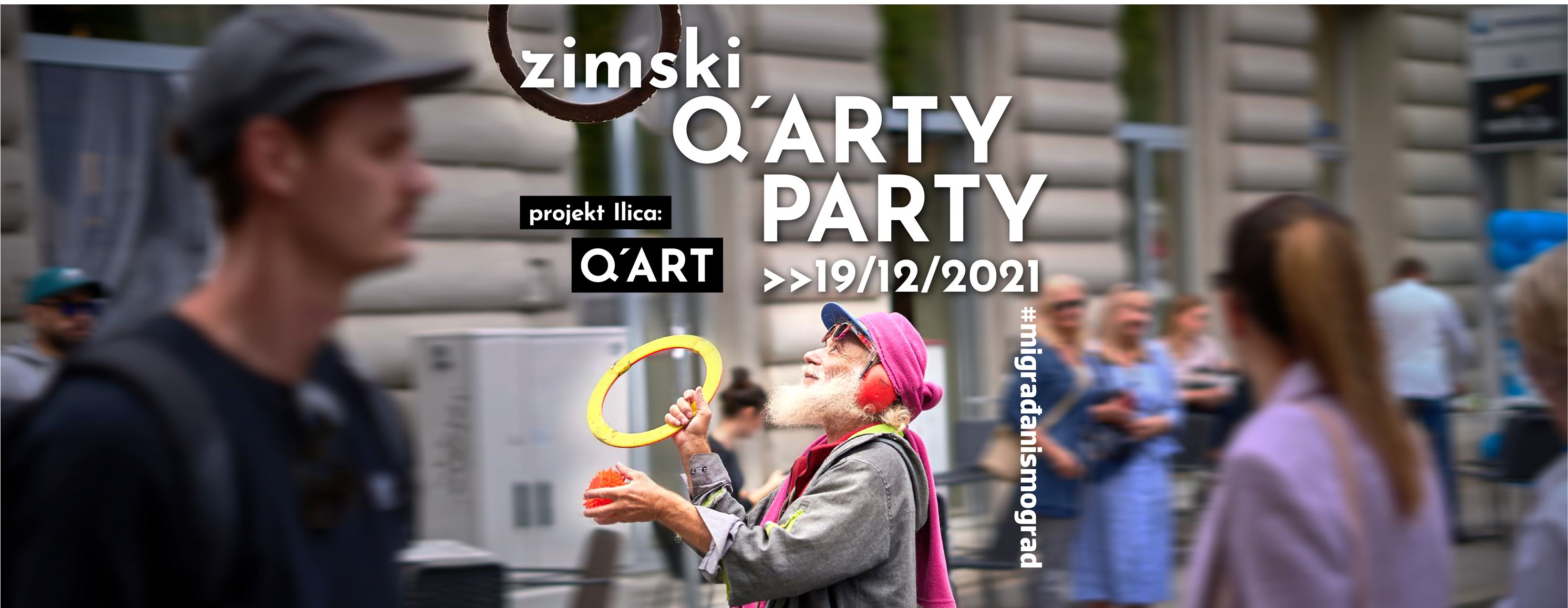
This year’s event will feature a sweet corner with cakes, pastry and sweets for visitors to enjoy in case they find themselves in need of a little pick-me-up.
Project Ilica: Q’Art is a collective public art project bringing together artists and the community and exploring urban culture. It was first conceived in 2000 and named Community Art, and has been taking place in the current form since 2016.
Date: December 19th
Working hours: 10 am to 2:30 pm
Location: outdoors on Ilica street!
ReArt Festival, Winter Edition (Osijek)
We’re heading to eastern Croatia for the last craft fair on our list! The ReArt Festival will feature more than 20 creative brands based in Osijek and the region.
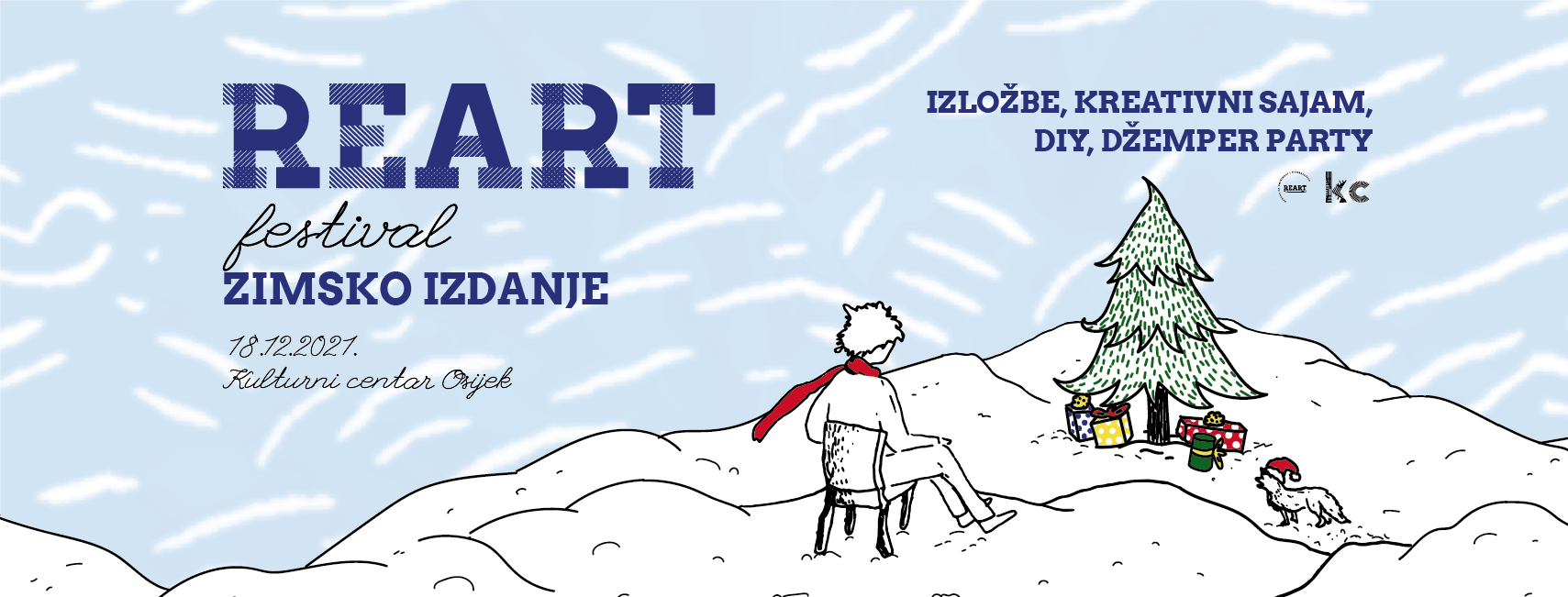
You can browse and buy lovely handmade products and artworks, including visual art, decor and souvenirs, toys, natural cosmetics, clothes and fashion accessories, and much more. Don’t hesitate to stop and chat with the artists - they’re always happy to share their story and tell you more about their work.
ReArt Festival is taking place on December 18th at the Cultural Centre Osijek. Apart from the art market, the event will include several workshops and end with a bang: a Christmas jumper afterparty featuring an exhibition and a live gig of the bands Svemirko and Čuvarkuća.
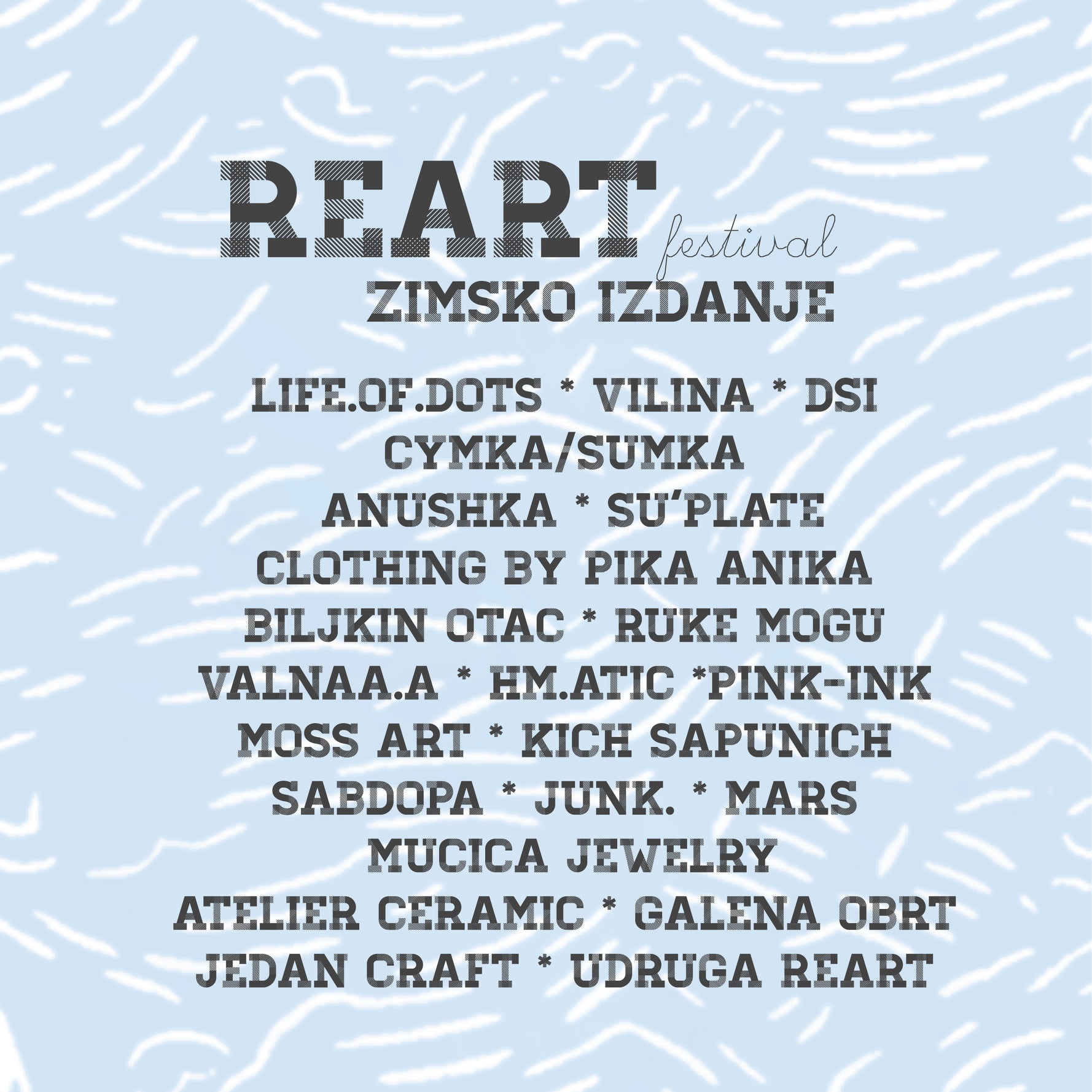 Participating artists
Participating artists
Date: December 18th
Working hours: 9am to 7pm
Location: Kulturni Centar Osijek (Cultural Centre Osijek)
Address: Ulica Kneza Trpimira 2/a, Osijek
Click here for the Facebook event.
A valid digital EU Covid certificate is needed to attend all events on this list.


